Works
Works
A list of works. Heavily under construction. Slowly filling in as of 2022-03-02.
- ---------------------------------–—
- Artistic / Research Projects
- ---------------------------------–—
- Performances
- ---------------------------------–—
- Pieces & Installations
- ---------------------------------–—
- Presentations
- ---------------------------------–—
- Workshops / Symposia
- ---------------------------------–—
- Publications
- Composing Interactions
- Anemone Actiniaria xCoAx
- Stop challenging technology! Towards content-based audio production
- Where Sounds Dwell
- Space is Algorithm
- Zwischenräume – A Case Study in the Evaluation of Interactive Sound Installations
- Waveguides for model-based sonification
- Sounds of simulations: data listening space
- Acoustic Interface For Tremor Analysis
- Exploring Sound and Spatialization Design on Speaker Arrays using Physical Modelling
- A Framework for the Choreography of Sound
- Physical modelling enabling enaction: an example
- A sonic time projection chamber, Sonified particle detection at CERN
- Spin quartets, sonification of the XY model
- PhysioSonic - Evaluated Movement Sonification as Auditory Feedback in Physiotherapy
- Quantum Harmonic Oscillator Sonification
- Motion-Enabled Live Electronics
- On Artistic Research in the Context of the Project Embodied Generative Music
- Towards a multi-layer architecture for multi-modal rendering of expressive actions.
- _
- ---------------------------------–—
- Interviews
- _
- ---------------------------------–—
The Choreography of Sound
Artistic Research Project
Ramón González-Arroyo, Gerhard Eckel, Martin Rumori, and David Pirrò
"The Choreography of Sound (CoS) is a project about the spatial in music, addressing in particular the domain of electroacoustic music. In contrast to acoustic sound, with its properties causally deriving from its origin and in which space is embedded in its nature, synthetic sound has no inherent properties, spatial or otherwise, and can be composed as a formal construct, with temporal and spatial properties opened to the imagination and the skills of its constructor.
In our approach sound is conceived including a spatial dimension. The sonic object has spatial extension, ideally suggesting the perception of dwelling in space. This perception, however, is not a direct and easy matter with which one can count for granted, quite on the contrary, it is our conviction that this goal will only be achieved through the collaborative action of compositional, scientific and technological forces. We are searching for the emergence of a perception of materiality of synthetic sound matter: the illusion of a sound object with the corporality of a plastic object. A change of perspective with consequences not to be underestimated in the conception of the composition of music."
A Framework for the Choreography of Sound
Publication
Eckel, Gerhard and Rumori, Martin and Pirrò, David and González-Arroyo, Ramón
Proceedings of the 38th International Computer Music Conference, ICMC 2012
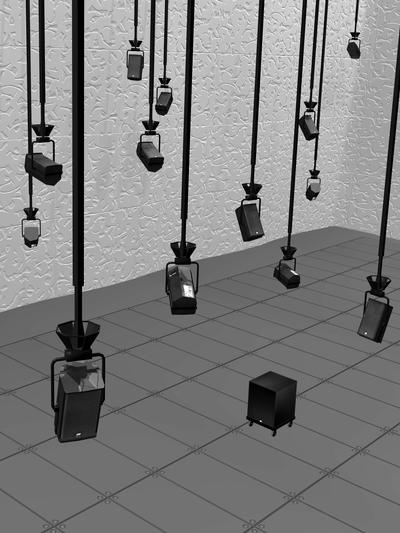
A framework developed in the context of the artistic research project The Choreography of Sound is presented. The project aims at furthering the practice of electroacoustic composition, especially with respect to the spatial in this genre. The general approach of the project is introduced as a basis for presenting the design of the framework. Its main components are described and the motivations for their design are explained. The framework comprises various tools to formulate spatial aspects of compositional ideas in heterogeneous ways (geometrically, as dynamic systems, and as objects composed from shared properties). Existing spatialisation techniques can be integrated in the framework and exposed to compositional control, such as to allow for unorthodox combinations of them as well as articulating them with other levels of composition. Visualisation and auralisation components allow for sensible work off-site in the otherwise very site-specific project. The CoS software framework is conceived as extensions to the SuperCollider audio programming environment.
ALMAT - Algorithms that Matter
Artistic Research Project
David Pirrò, Hanns Holger Rutz
Algorithms that Matter (Almat) is an artistic research project by Hanns Holger Rutz and David Pirrò. It aims at understanding the increasing influence of algorithms, translating them into aesthetic positions in sound. It builds a new perspective on algorithm agency by subjecting the realm of algorithms to experimentation and diffractive reading.
Almat is a three-year project running from 2017 to 2020, within the framework of the Austrian Science Fund (FWF) – PEEK AR 403-GBL – and funded by the Austrian National Foundation for Research, Technology and Development (FTE) and by the State of Styria. It is hosted by the Institute of Electronic Music and Acoustics (IEM) at the University of Music and Performing Arts Graz.
ALMAT - at Impuls Academy 2017
Workshop
David Pirrò, Hanns Holger Rutz, and Agostino Di Scipio
February 11th-19th, 2017, IEM Graz
ALMAT . Algorithms That Matter
Algorithms That Matter (ALMAT) focuses on the experimentation with algorithms and their embedding in live performances. Rather than conceiving algorithms as established building blocks (“live electronics”) or the formalisation of a compositional idea (“algorithmic composition”), we look at them as performing entities whose consequences are irreducible to models. Algorithms “matter” in the sense that matter and meaning cannot be distinguished, they may be moulded and they may unfold material in an ecosystemic way: Materials become a new source for transformation.
This workshop seeks to attract computer music practitioners, sound artists and composers by offering a platform for exchange and reflection about their personal approaches towards algorithmic experimentation. The participants are enabled to further develop their approaches, where special emphasis is given to the reciprocal coupling of their respective systems. The workshop starts with an internal presentation of the participants for the other participants and tutors, followed by an in-depth analysis and discussion of the different approaches. The rest of the workshop takes a semi-structured form, open to adaptation to the interests of the participants. Focus will be on the mutual engagement and the production of connecting points between systems, using both data and sound links. At the end, concert slots within the impuls festival are allocated for the participants to present either existing works or new works developed during the workshop.
The workshop will be held at the CUBE performance space of the Institute for Electronic Music and Acoustics (IEM). The CUBE is equipped with a 24-channels periphonic loudspeaker setup for advanced sound spatialisation and an 18-cameras infra-red motion capture system allowing bodily motion to be used as input for sound synthesis and processing.
The workshop Almat was developed by David Pirrò and Hanns Holger Rutz (both IEM Graz) and will be realised together with Agostino Di Scipio.

Selected participants for this program:
- Alyssa Aska
- Laura Endres
- A. Fernández Rodríguez
- Davide Gagliardi
- Brian Garbet
- Phivos-Angelos Kollias
- Frédéric Le Bel
- Matteo Polato
From Data to Process
Presentation
From Data to Process: Algorithms that Matter, Hanns Holger Rutz, David Pirrò and Agostino Di Scipio, Perspectives and project launch
Abstract:
Algorithms that Matter (Almat) is a three-year FWF-funded artistic research project (AR 403) run by Hanns Holger Rutz and David Pirrò at the IEM Graz. It asks how algorithmic processes emerge and structure the praxis of experimental computer music. What we are interested in is to rethink algorithms as agents co-determining the boundary between an artistic machine or “apparatus” and the object produced through this machine. Unravelling the seemingly stable notion of algorithm, we look at the way an experimental culture in which the work with algorithms is embedded shapes our understanding of it, retroacts and changes the very praxis of composition and performance. Using as dispositifs two distinct software systems we have created, SoundProcesses and rattle, we implement a series of connected experiments, addressing research questions such as: What are the “units” of algorithms, in what way can they be de- and recomposed, what is the nature of their affordances and material traces, how can they be preserved and inform the methodology of artistic research? Special focus is put on the reconfiguration of elements, such as relaying a system to another artist/composer, and we work with a number of invited guest artists to explore the different algorithmic perspectives.
In From Data to Process, Rutz, Pirrò, and collaboration partner Agostino Di Scipio introduce the project and strategies to pursue, when data remains incomputable and algorithms become forms of process.
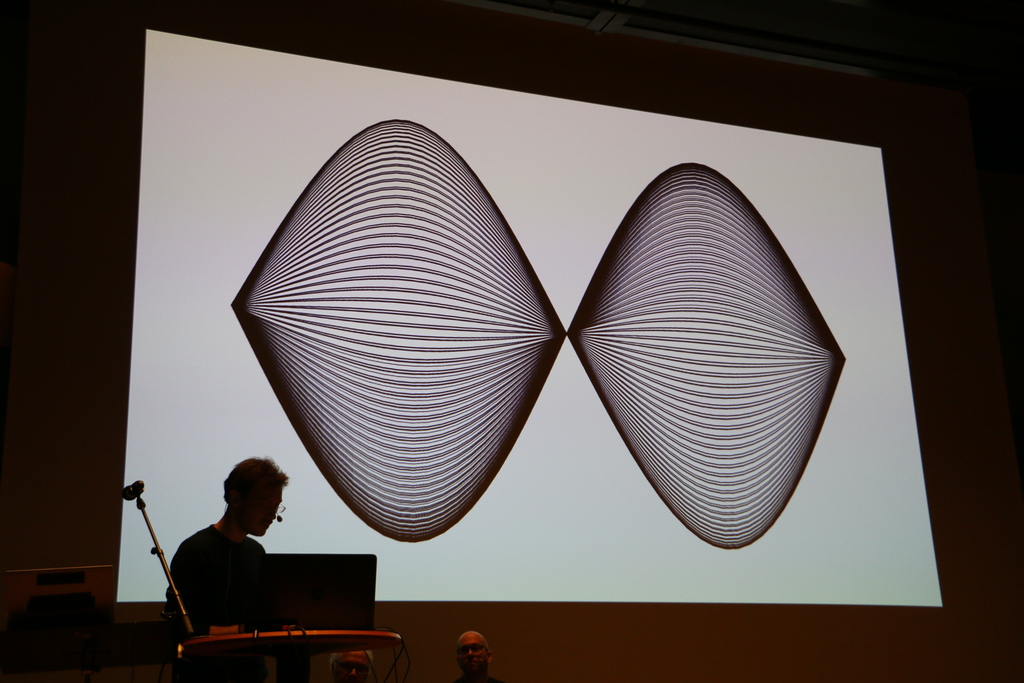
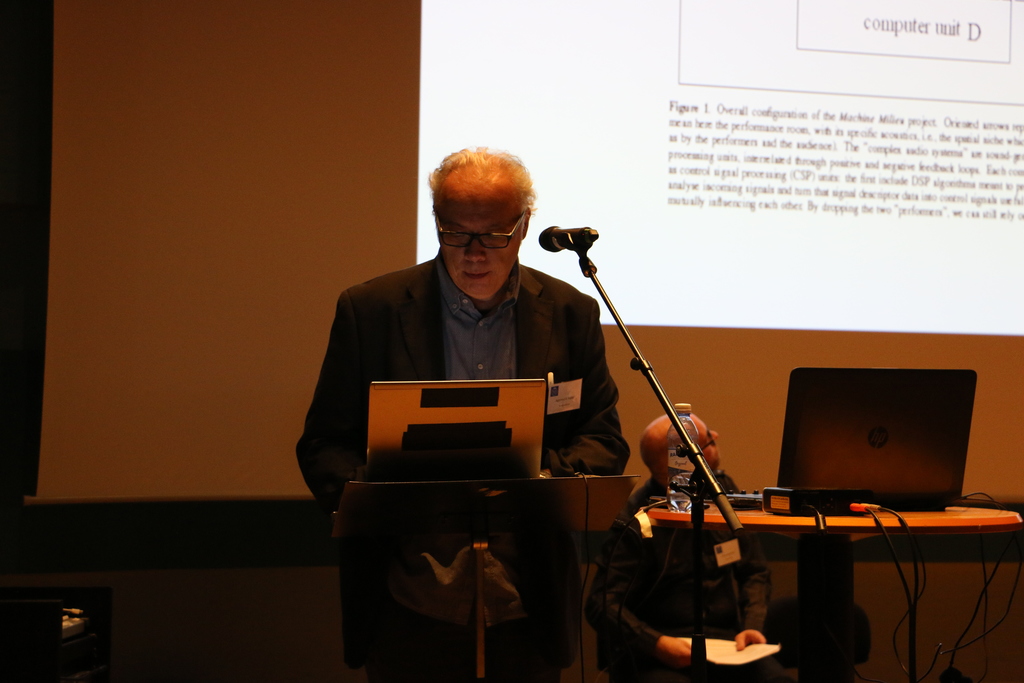
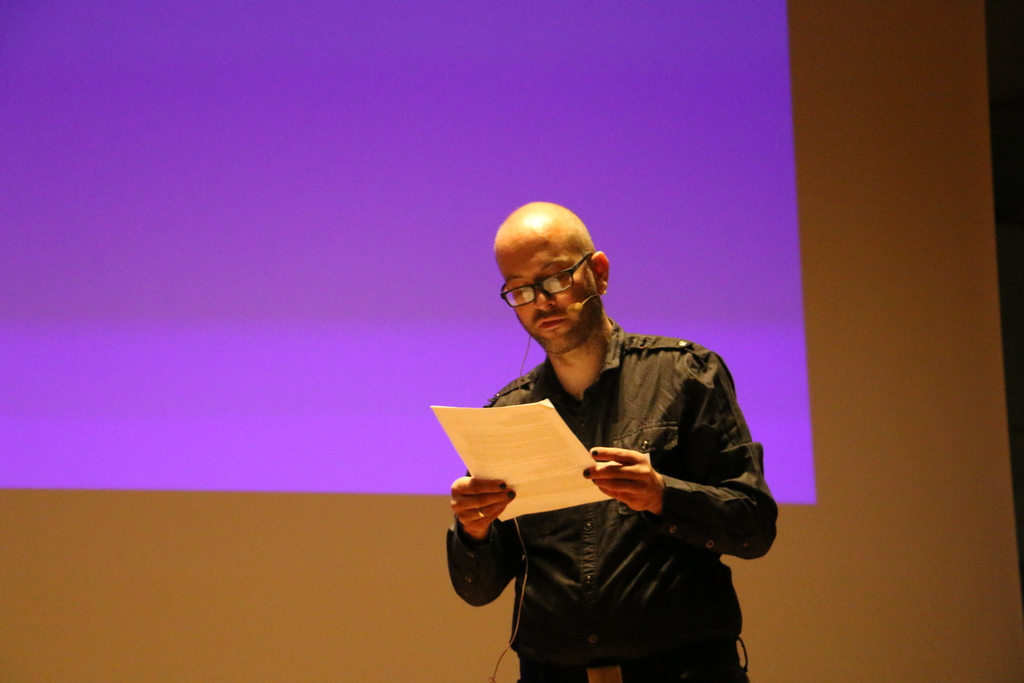
Transpositions
Anemone Actiniaria
Live-electronic duo project
David Pirrò, Hanns Holger Rutz
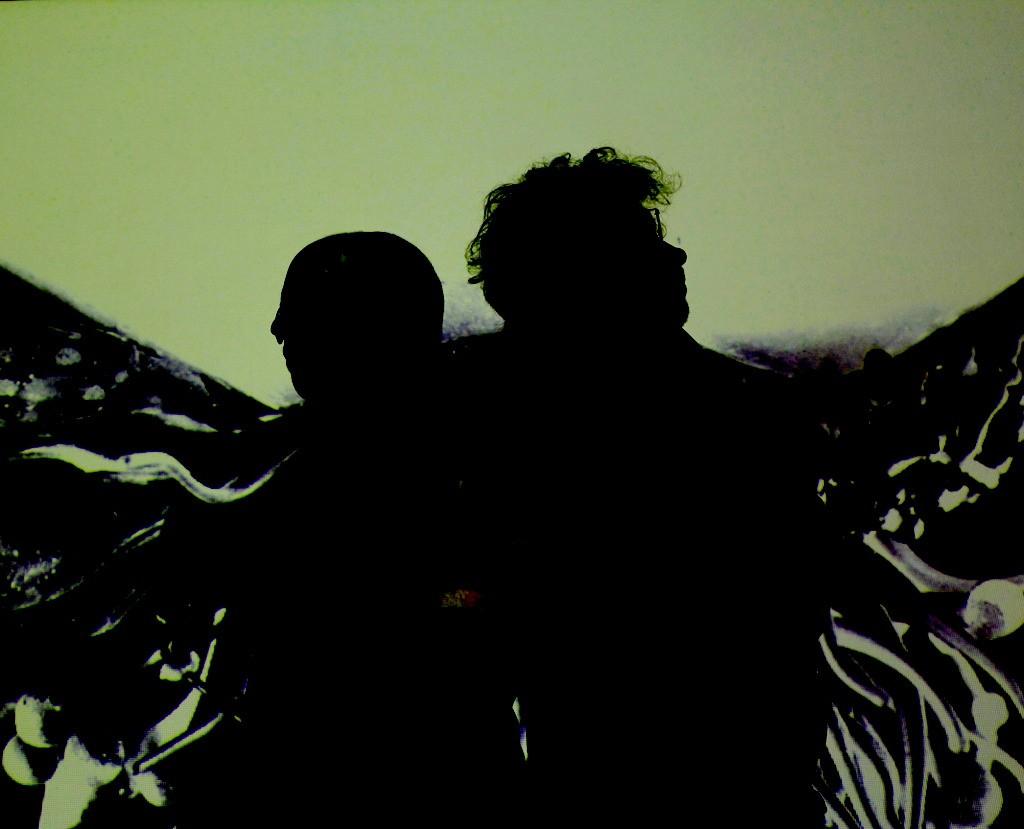
Anemone Actiniaria is an algorithmic improvisation duo founded by Hanns Holger Rutz and David Pirrò in 2014. In it, they couple computer systems and introduce semi-autonomous agents. As artistic research project, the seemingly well-defined concept of algorithm is subject to a new reading based on material agencies. Mutual observation and overwriting is initiated between our systems, Wolkenpumpe and rattle, rooted in physical modelling and in the generation of parametric models based on machine learning. This is inspired by the notion of an emergent new machine through ‘orientation’ and ‘composition’ as outlined by Heinz von Foerster and Dirk Baecker, whereby the functions of operators and operands of the formerly separated systems begin to vacillate.
Anemone Actiniaria performed in various venues including the xCoAx 2016 Conference in Bergamo and the the BEAST FEaST 2017 in Birminghem (upcoming). The duo has also been invited for a residency at ZKM | Institut für Musik und Akustik (IMA) in 2015 where it contributed to a concert of the EASTN European Art-Science-Technology Network.
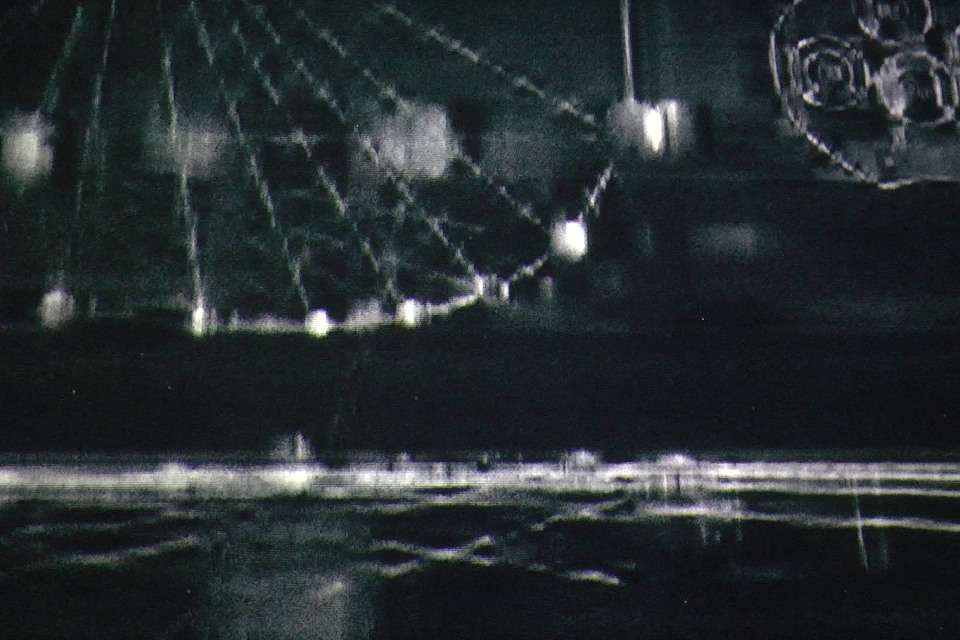
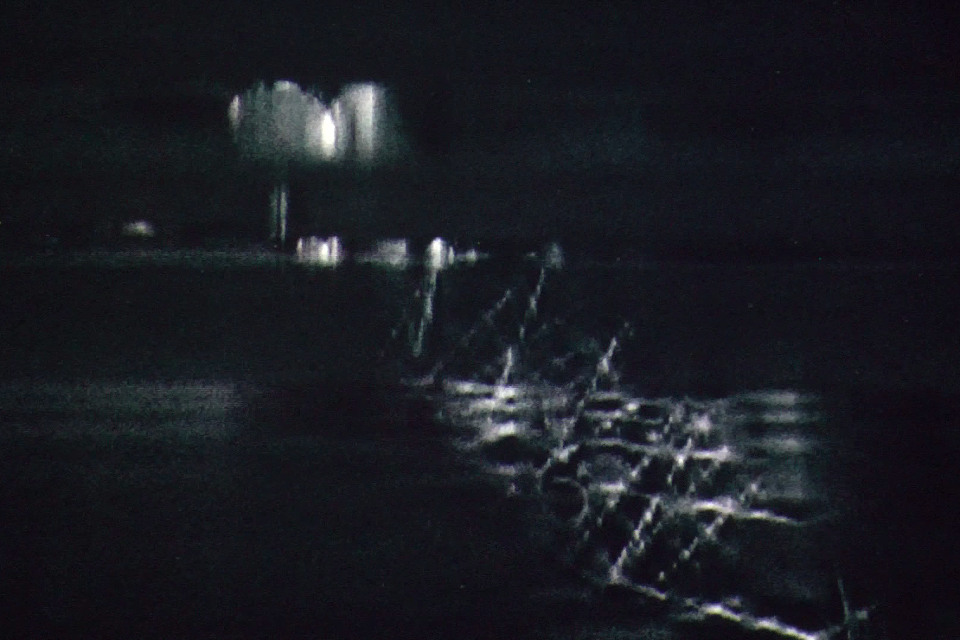
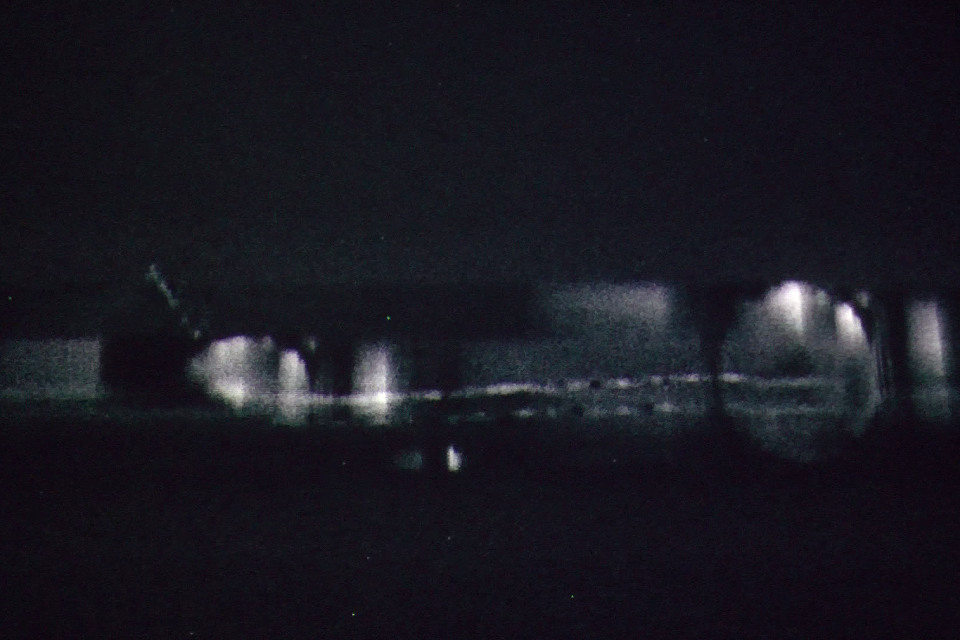
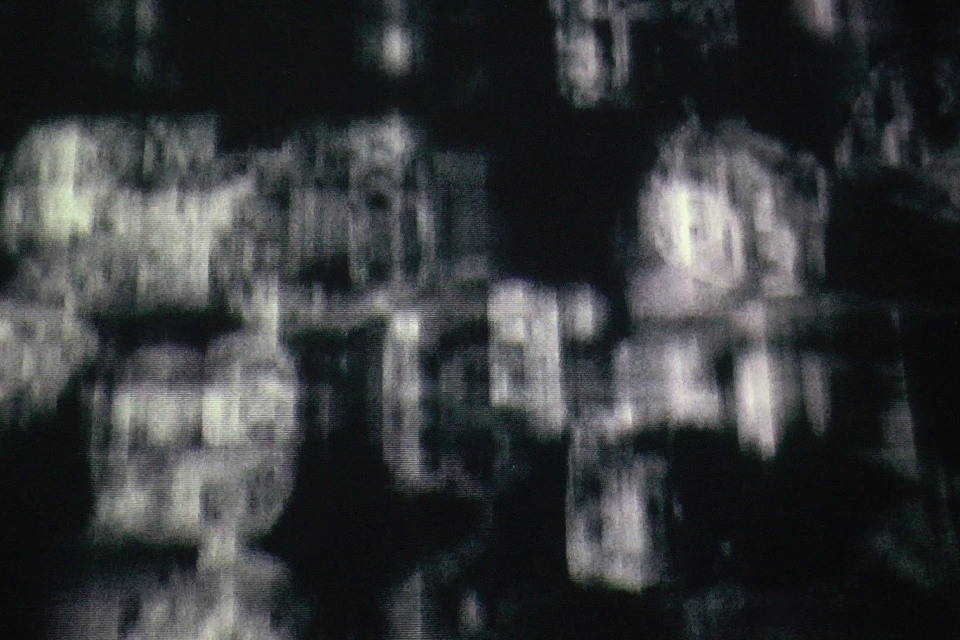
Anemone Actiniaria on the Researchcatalogue
Please contact us if you are interested in obtaining a demo of this project. Here is an excerpt from a live improvisation:
Anemone actiniaria at the Pikselfest 2021
Further recordings:
anemone af1a21b (i)
anemone af1a21b (ii)
anemone af1a21b (iii)
anemone af1a21b (iv)
Recording of the performance on 17.01.2017 - Art's Birthday, which has been streamed live on Ö1, Austria's first public radio channel.
Performances
Some past and forthcoming performances of Anemone Actiniaria
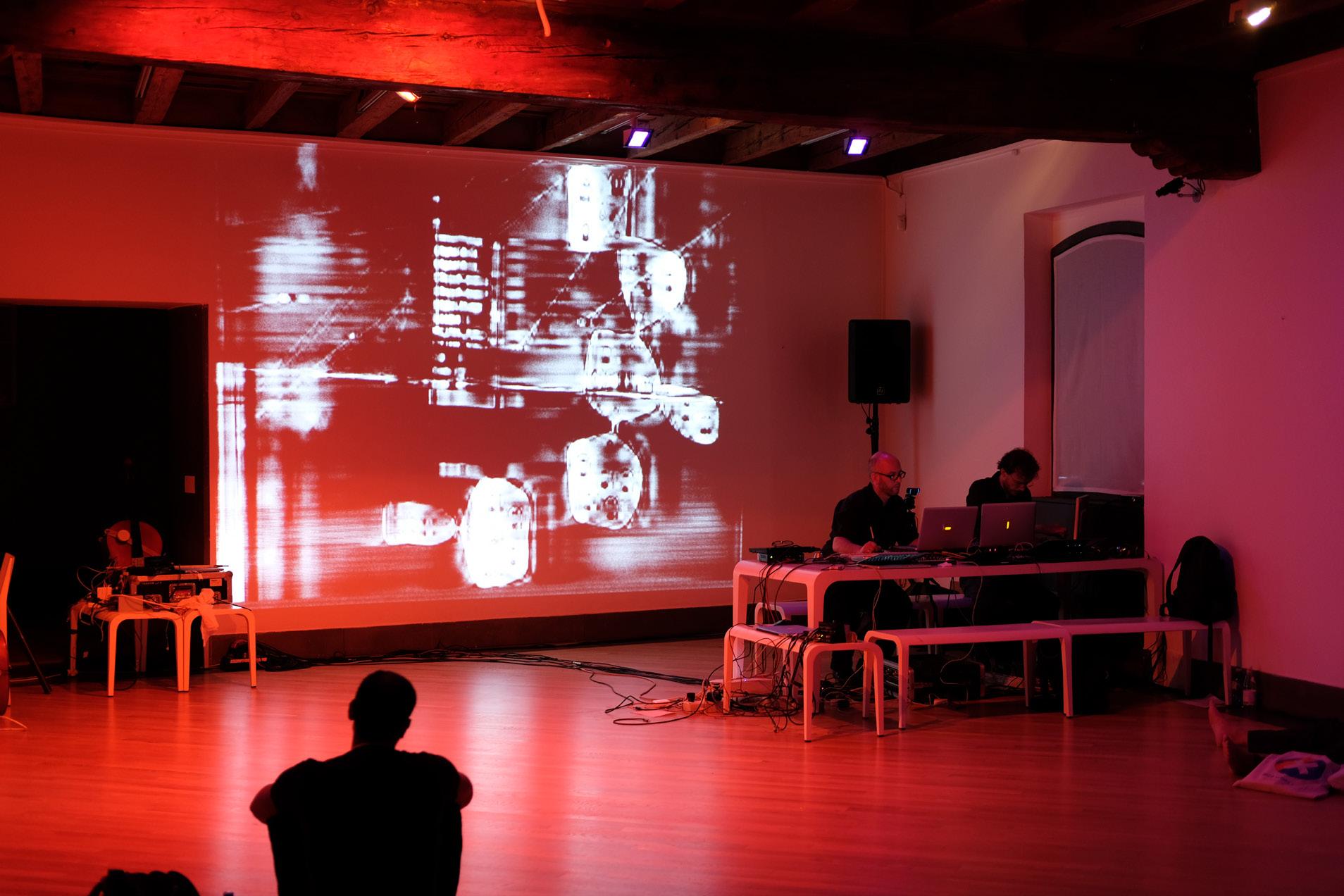
- Welscher Kirche, Graz, 14.11.2014
- Forum Stadtpark, Graz, 29.11.2014
- ZKM, KUBUS, GLOBALE: Tangible Sound Festival, Karlsruhe, Germany, 27.09.2015
- Forum Stadtpack Graz, 04.12.2015
- Impuls Minutenkonzerte, Graz, 28.05.2016
- xCoAx Conference, Bergamo, Italy, 06.07.2016
- esc medien kunst labor, Graz, Art's Birthday, 17.01.2017
- Impuls 2017 Festival for Contemporary Music, 14.02.2017
- BEAST FEaST 2017, Birmingham, UK, 04.2017
- Impuls Minuten Konzerte, Graz 26.05.2018
- elettroAQustica, L'Aquila, 2018 3.10.2018
- InSonic 2018, ZKM, Germany, 07.12.2018
- MUWA - Museum der Wahrnehmung, Graz, Austria, ALMAT - Algorithms That Matter Wokshop, 17.02.2019
- km28, Berlin, Germany 20.09.2019
- Pikselfest, Bergen, Norway 20.11.2021
Anemone Actiniaria xCoAx
Paper
David Pirrò, Hanns Holger Rutz
Proceedings of the xCoAx "Computation Communication Aesthetics & X Conference" 2016
Where Sounds Dwell
Essay
Hanns Holger Rutz, David Pirrò
Appeared in: Rose of the Winds, Nayari Castillo and Kate Howlett-Jones, 2016 ISBN:978-3-9504253-1-4
Dancing the Voice
Performative Inquiry
Anna Nowak, Alexander Gottfarb, Christine Ericsdotter, Gerhard Eckel, David Pirrò
This project is an interdisciplinary research process articulating the practices of choreography, phonetics and sound art. It is a co-opertation with the dancers and choreographers Anna Nowak (Poland) and Alexander Gottfarb (Sweden), the lignuist and phonetician Christine Ericsdotter (Sweden), and composer and sound artist Gerhard Eckel (Austria) and David Pirrò (Italy, Austria).
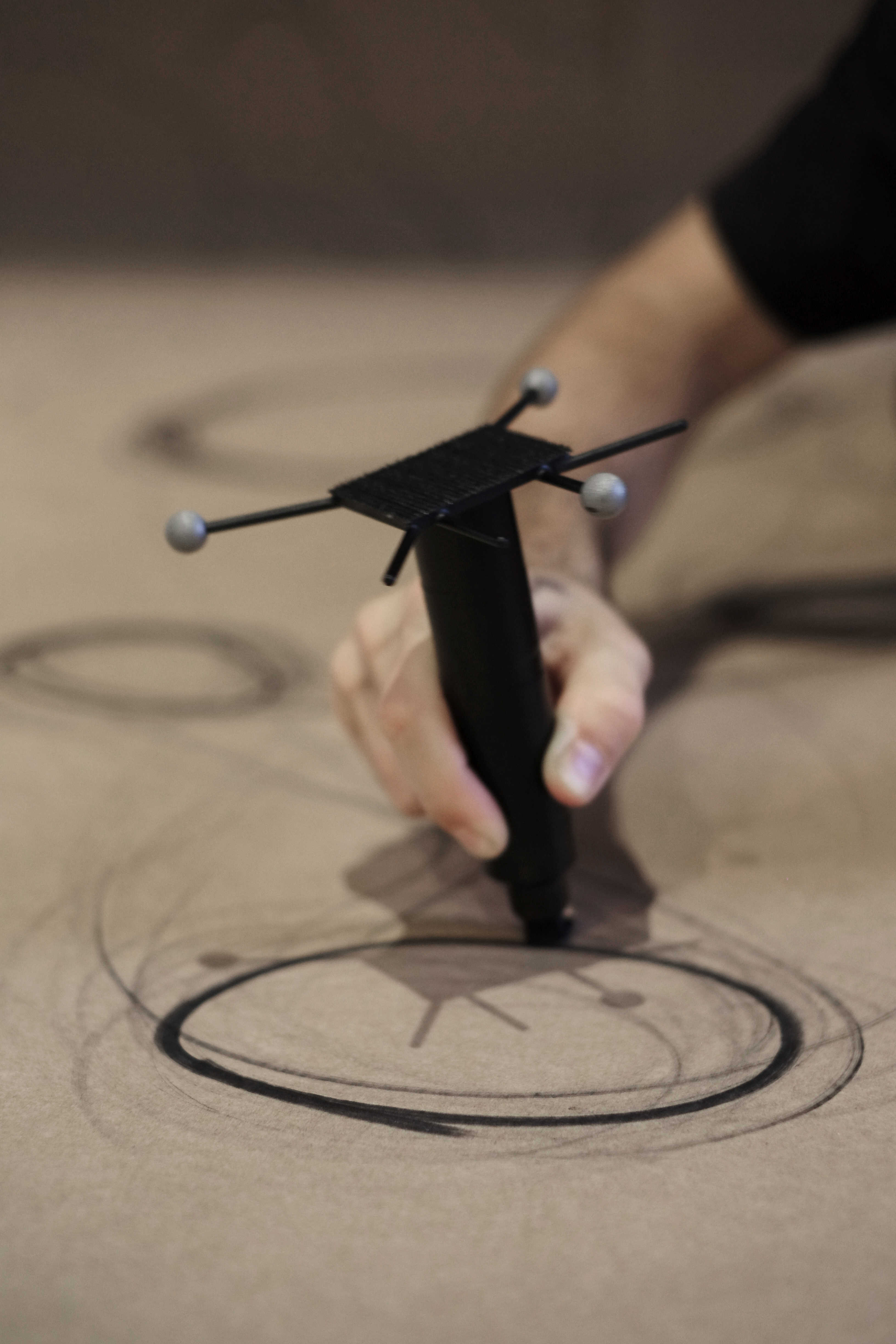
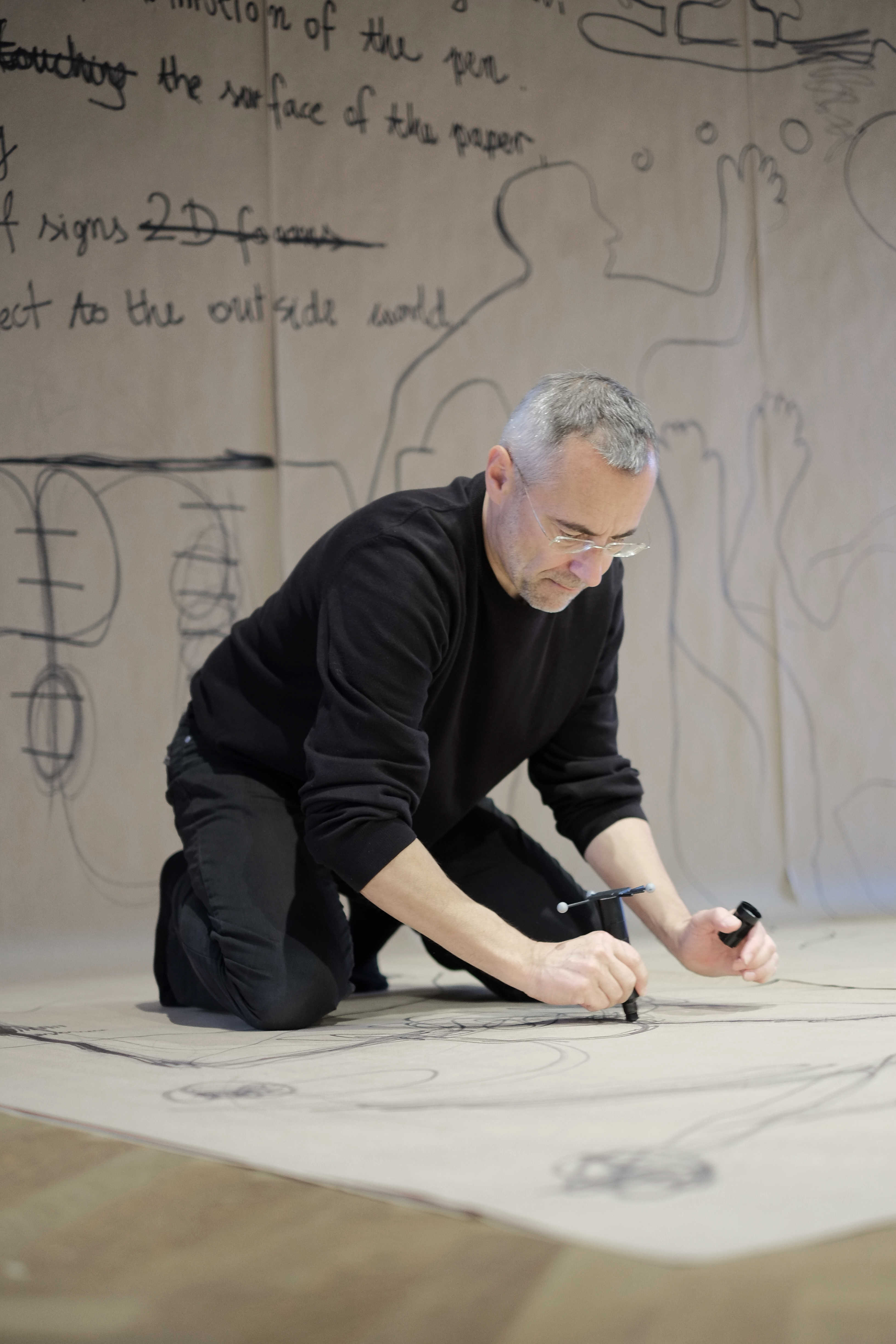
The origins of this work can be traced back to Embodied Generative Music (EGM), a project initiated by Gerhard Eckel in 2007 at the Institute of Electronic Music and Acoustics (IEM), University of Music and Performing Arts Graz, Austria. EGM investigated the relationship between musical and bodily expression by extending dancers’ bodies into virtual instruments using a full-body motion tracking system. This artistic research continued in the interdisciplinary project Dancing the Voice, funded by the Wenner-Gren Foundation: articulating the practices of choreography, phonetics and music composition, this ongoing project produces a series of performative inquiries focussing on the relation of bodily movement and vocal sound. The piece On Traces, performed at the Royal Technical University in Stockholm in the autumn of 2014 and in Tanzquartier Wien in February 2015, was the first open presentation of the research process which then continued in Every move a sound – On the Intricacies of Memory performed in September 2016 in Graz, Austria.
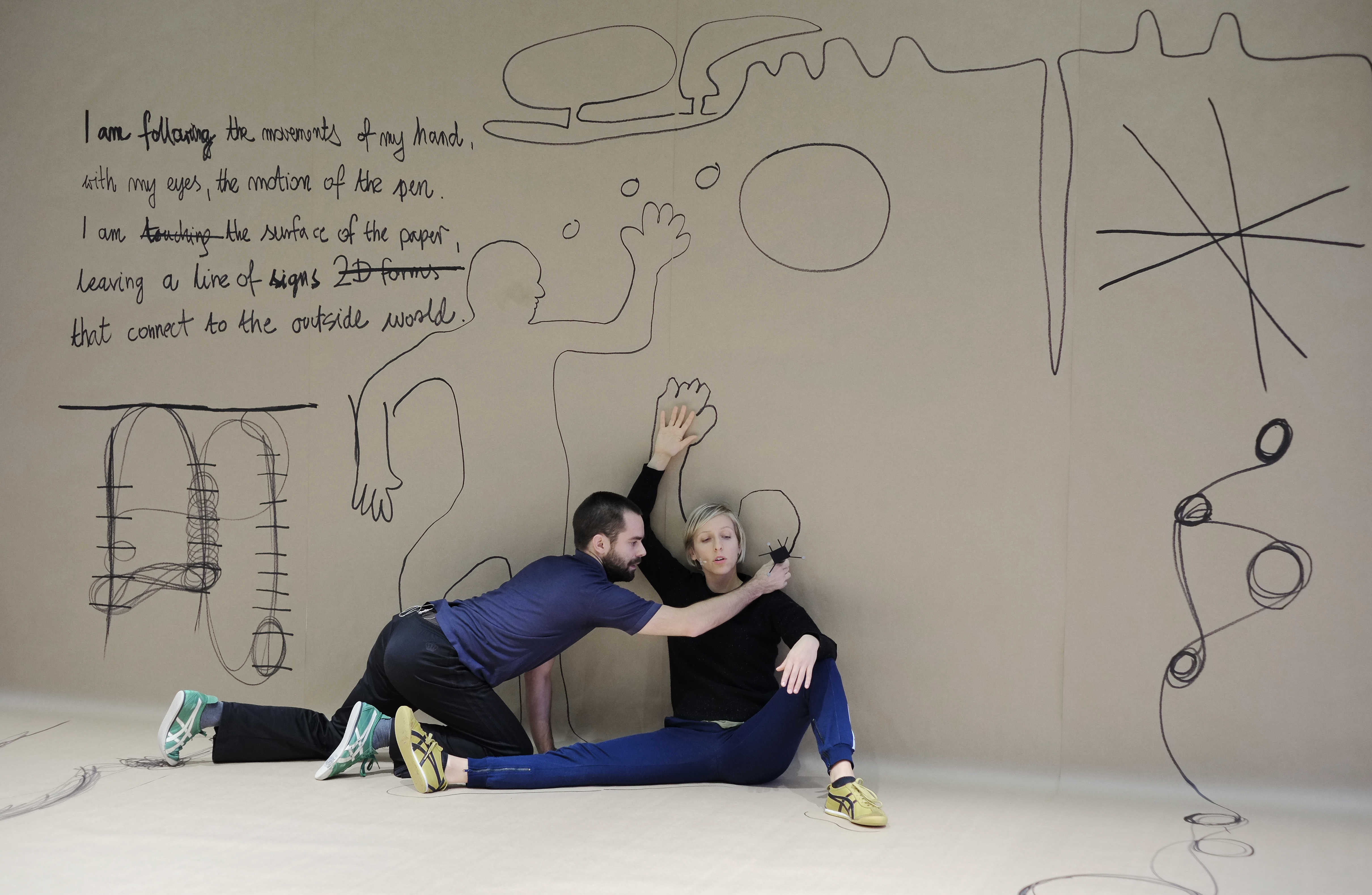
On Traces
Intermedial Performance
Anna Nowak, Alexander Gottfarb, Christine Ericsdotter, Gerhard Eckel, David Pirrò
Performed at the Royal Technical University in in Stockholm in the autumn of 2014 and in Tanzquartier Wien in February 2015
On Traces is the first presentation within the Traces research process.
One of the underlying methods established in this process allows for freely inscribing and retracing sonic motion traces in space. These sonic motion traces are created using a microphone and a motion tracking system. The performer makes a sound and a movement. The motion tracking system records the pathway of the movement simultaneously as the sound is recorded. This tool enables the performers to create a spatial sound playground, using their own voices as building material. In turn, this unique sonic environment is closely linked to the movements, which are traced by one point on their bodies. The specific set up introduced above can be thought of as a kind of a “spatial tape recorder”. An in depth performative interrogation of these movements and sound landscapes led to an intensive exploration of the concepts of the trace, of writing and scanning. At the same time a multitude of questions about perception, attention, language, memory, change and transformation were raised. In On Traces four performers compose and explore a sound environment with the aim of tracing the expressive potential of this space formed of sounds, movements and lines.
On Traces - Tanzquartier Vienna
On Traces - An Artistic Research Process between Choreography and Sound Art
Presentation - Public Lecture
David Pirrò
Presentation in the context of the Public Lecture series Bewegung als kulturelles Phänomen (Movement as cultural Phenomenon) which has taken place in the Summer Semester at the University of Graz
Abstract: "On Traces" is an interdisciplinary research process in which the practices of choreography and sound art are linked together. Here, in a series of performative inquiries, the relationship between physical movement and vocal sound is explored.
In the research process a new method was developed with which it was possible to write sound traces freely in the space and find them again later so they could sound again. In this way performers can create invisible sound landscapes out of their own voices. Simultaneously, in these landscapes the movements of a point on the performers’ bodies are inscribed thereby closely linked to the stored sounds. An in depth performative interrogation of these movement and sound landscapes led to an intensive exploration of the concepts of the trace, of writing and scanning. At the same time a multitude of questions about perception, attention, language, memory, change and transformation were raised.
In On Traces four performers compose and explore a sound environment with the aim of tracing the expressive potential of this space formed of sounds, movements and lines.
The origins of this work go back to the project project Embodied Generative Music (EGM, FWF TRP L399-G13, http://egm.kug.ac.at/), which Gerhard Eckel initiated in 2007 together with Deniz Peters at the Institute for Electronic Music and Acoustics (IEM) at the University for Music and Performing Arts Graz and in which Anna Maria Nowak, Alexander Gottfarb and David Pirrò were also involved. EGM was concerned with the relationship between musical and physical expression, using motion-capture technology to enable dancers to turn their bodies into virtual instruments. The interdisciplinary research process prompted in this way was sponsored by the Wenner-Gren Foundation as part of the Dancing the Voice project in Stockholm. The research that led to On Traces has been supported by the FWF project The Choreography of Sound (PEEK AR41).
Every Move a Sound
Intermedial Performance
Anna Nowak, Alexander Gottfarb, Gerhard Eckel, David Pirrò
Performed at Institute of Electronic Music and Acoustics 17.09.2016
We move and sound. We wear sound and motion sensors. Movements and sounds are joined and recorded as traces. Continuously.
Everybody yarns their sonic filament retractable by anybody. Anytime. Retracing is resounding is reinscribing. One’s own or another’s trace. Inevitably. We fill the performance space with remnants of our actions. This is how the past remains with us. Every action constraining the future. Becoming an obstacle or turning into a potential. The denser the traces, the harder it becomes to read them, to pull a thread out of the plot.
In this environment we engage in extended and repetitive improvisatory processes, fathoming the potential of the collective instrument we are developing since years. We aim at establishing a performance practice in which movement and sound can coexist without exploiting or betraying each other.
Every move a sound – On the Intricacies of Memory is a production by Kunstverein Archipelago.
With the support of: Bundeskanzleramt Österreich MA 7 – Kulturabteilung der Stadt Wien IEM Graz KTH Stockholm
Composing Interactions
Dissertation - David Pirrò
Abstract - English
This thesis investigates interaction in computer music composition, particularly in the context of performance- oriented generative music practice. The research follows three approaches of inquiry.
The first is a scholarly and theoretical analysis of the concept of interaction and its understanding in the field of computer music. The topic is discussed in relation to theories of perception and cognition in philosophy and cognitive sciences, in particular with the concepts of embodiment and enaction. This approach introduces an understanding of interaction as a temporal process of mutual influence taking place between agents. At this point, the concept of the agent becomes central to this dissertation.
The second direction of research is based on the mathematical theory of dynamical systems. The framework implies a process-based mindset and offers an ecological perspective that emphasises the role of interrelations between elements in a system. In the context of this work, dynamical systems are understood as the most apt language for formulating and understanding processes of interaction.
A third approach consists of personal artistic engagement in the development of interactive computer music environments. This thread interweaves with the former two and allows for continuous aesthetic experimentation : speculations and abstract intuitions are put into perceptible form and, in turn, concepts and formulation can be sharpened by experience. An essential part of this engagement relies on the software framework rattle, which has been developed for the formulation and the real-time simulation of dynamical systems.

The dissertation develops an approach towards interaction that employs the language of dynamical systems to address the agency of generative computer music processes. Eventually, agency is re-interpreted as an essential perceptual quality generative computer music systems should be afforded with to allow for a composition of interactions to emerge.
Zusammenfassung - German
Diese Dissertation untersucht Interaktion im Kontext der Komposition von Computermusik im Allgemeinen sowie der Praxis performance-orientierter generativer Musik im Besonderen. Die Forschung verfolgt drei methodische Ansätze:
Der erste Ansatz besteht in einer wissenschaftlichen und theoretischen Analyse des Konzeptes von Interaktion und dessen Verständnis im Bereich der Computermusik. Dieses Thema wird in Relation mit Theorien von Wahrnehmung und Kognition innerhalb von Philosophie und Kognitionswissenschaften gestellt, insbesondere durch die Konzepte von Embodiment und Enaction. Eingeführt wird eine Auffassung von Interaktion als einem zeitlichen Prozess gegenseitiger Beeinflussung, die zwischen Agenten stattfindet. An dieser Stelle entwickelt sich das Konzept des Agent zu einem zentralen Thema der Dissertation.
Die zweite eingeschlagene Richtung der Forschung basiert auf der mathematischen Theorie dynamischer Systeme. Dieses Bezugssystem gewährt eine prozessbasierte Denkart und eine ökologische Perspektive, welche die Rolle von Wechselbeziehungen zwischen Elementen eines Systems betont. Im Rahmen der vorliegenden Arbeit wird dieser Ansatz als die geeignetste Sprache betrachtet, um Prozesse der Interaktion zu formulieren und zu verstehen.
Ein dritter Ansatz besteht in der persönlichen künstlerischen Beschäftigung mit der Entwicklung interaktiver Computermusik- umgebungen. Dieser Strang wird mit den beiden vorherigen verwoben und ermöglicht das kontinuierliche ästhetische Experimentieren : Vermutungen und abstrakte Intuitionen werden in wahrnehmbare Form überführt, und umgekehrt können Konzepte und Formulierungen durch die Erfahrung geschärft werden. Ein wesentlicher Teil dieser Beschäftigung stützt sich auf das Software-Framework rattle, das für die Beschreibung und Echtzeitsimulation dynamischer Systeme entwickelt wurde.
Diese Dissertation entwickelt einen Standpunkt hinsichtlich Interaktion, welcher die Sprache dynamischer Systeme gebraucht um, die Wirkmächtigkeit generativer Computermusik- prozesse zu erfassen. Schlussendlich wird Wirkmächtigkeit (agency ) als eine essentielle Wahrnehmungsqualität neu interpretiert, mit welchen generative Computermusiksysteme auszustatten sind, um das Komponieren von Interaktionen zu ermöglichen.
Zwischenräume – A Case Study in the Evaluation of Interactive Sound Installations
Georgios Marentakis, David Pirrò, Raphael Kapeller
ICMC Conference 2014
This paper presents a collaborative project revolving around the conception, the realisation, and the qualitative evalua- tion of the interactive sound installation zwischenräume. In the installation interaction is considered in a particular way, in that both the installation and the visitor are regarded as being part of an evolving dynamical system.
First, we will frame the addressed question in the relevant research context. Then the installation and the ideas guiding its realisation will be described. Next, the evaluation methods used in this case study will be presented as well as the first results arising from their application. We finally point out how evaluation results could inform the subsequent refinement of the sound installation and directions for future research. The aspects investigated here are part of broader research project that looks into how evaluation strategies could be integrated in the development lifecycle of interactive sound installations.
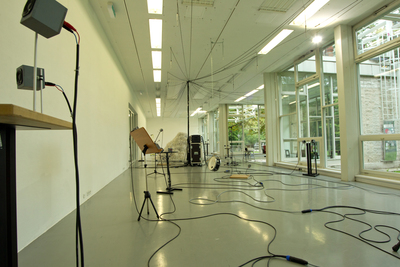
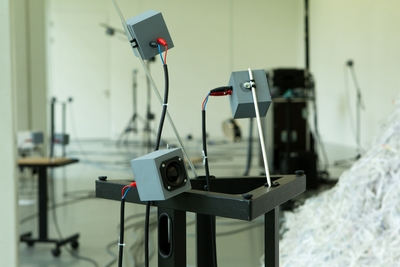
Waveguides for model-based sonification
Vogt, Katharina and Pirrò, David and Höldrich, Robert
Proceedings of the 9th Sound and Music Computing Conference, SMC 2012
Digital waveguides have been used in signal processing for modelling room acoustics. The same technique can be used for model-based sonifications, where the given data serves to construct the three-dimensional sound propagation model. The resulting sounds are intuitive to understand as they simulate real world acoustics. As an example we introduce a digital waveguide mesh based on complex data of computational physics. This approach allows ex- ploring sonically this three-dimensional data and unveiling spatial structures.
Sounds of simulations: data listening space
Vogt, Katharina and Pirrò, David and Rumori, Martin and Höldrich, Robert
Proceedings of the 38th International Computer Music Conference, ICMC 2012
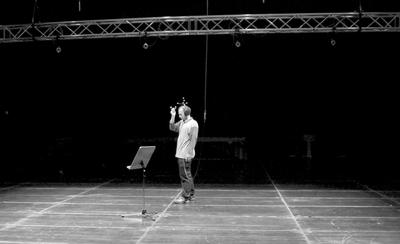
Simulations, as widely used in science, need to be perceptualized. Data from computational physics’ simulations provide an interesting application case for sonification, which was studied in the research project QCD-audio. Within the project, the data listening space was set up as an interactive installation in Nov. 2009 in Graz, Austria. It allowed non-experts to immerge into the sonification of lattice quantum electrodynamics’ data as a virtual auditory scene. Movement and position of one listener at a time were tracked and used in the sonification, establishing a tight connection between virtual and real space. The installation was evaluated in a small test setting following a grounded theory approach.
Acoustic Interface For Tremor Analysis
Pirrò, David and Wankhammer, Alexander and Schwingenschuh, Petra and Sontacchi, Alois and Höldrich, Robert
Proc. of the 18th International Conference on Auditory Display, ICAD 2012
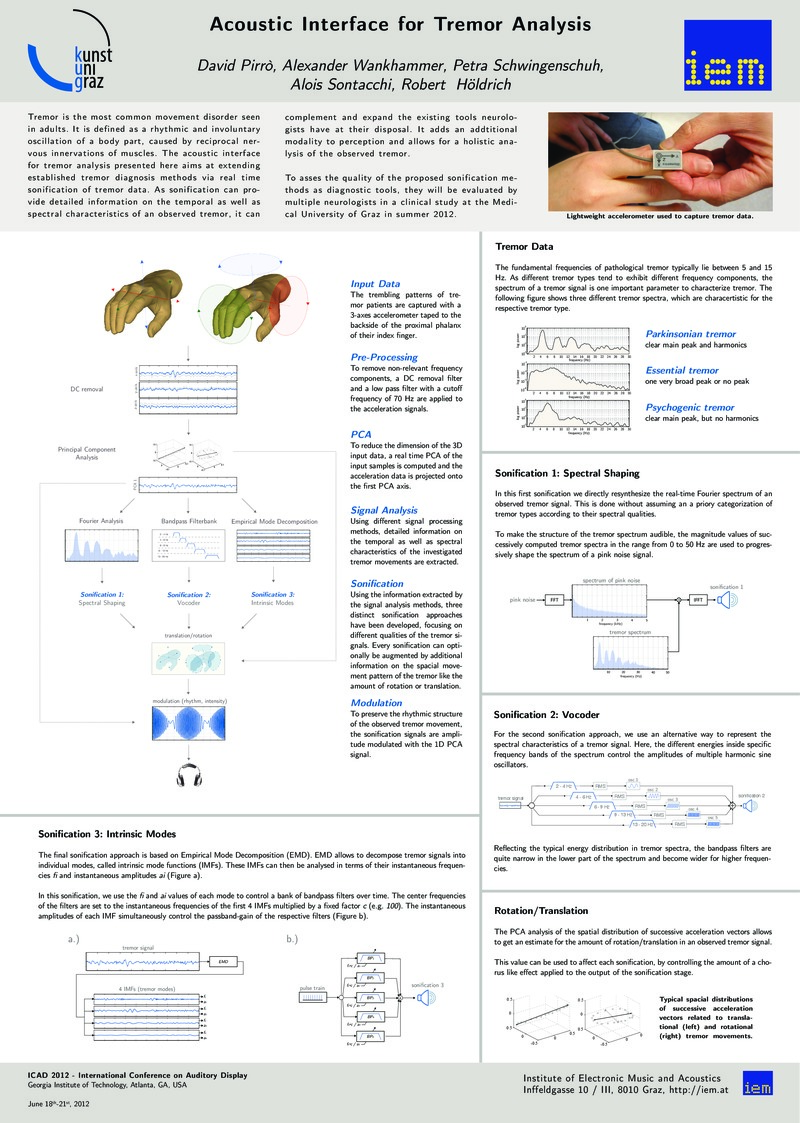
In this paper we introduce new methods for real-time acoustical tremor diagnosis. We outline the problems of tremor diagnosis in the clinical context and discuss how sonification can complement and expand the existing tools neurologists have at their disposal. Based on three preliminary sonification experiments upon recorded tremor movement data, we show how temporal as well as spectral characteristics of tremor can be made audible in real-time. Our first observations indicate that differences among tremor types can be made recognizable via sonification. Therefore, we suggest that the proposed methods could allow for the formulation of more con fi dent diagnoses. At the end of the paper, we will also shortly outline the central topics of future research.
Exploring Sound and Spatialization Design on Speaker Arrays using Physical Modelling
Marentakis, Georgios and Pirrò, David
Proceedings of the 9th Sound and Music Computing Conference, SMC 2012
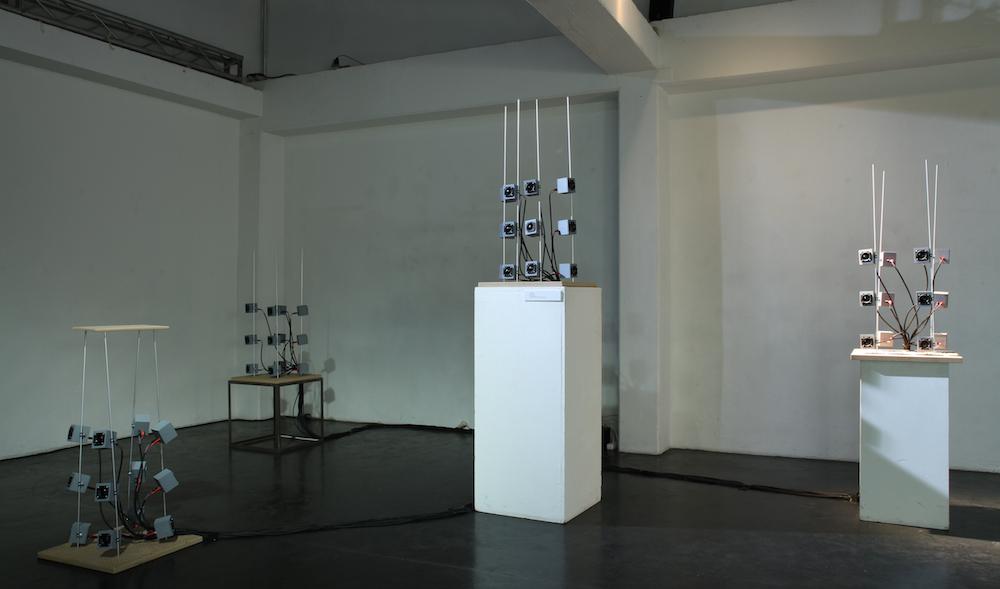
In the course of the realization of the sound installation Interstices, questions pertaining to the auditory perception of location and extent and the spatial composition of the micro and macro structure of sound were explored in a poietic way. Physical modelling was re-interpreted as a framework to design the spatial and timbral appearance of sounds upon a set of distributed speaker array clusters. This explorative process lead to observations that helped formulating novel research questions within the context of psychoacoustics and auditory display.
Physical modelling enabling enaction: an example
Pirrò, David and Eckel, Gerhard
Proceedings of the International Conference on New Interfaces for Musical Expression, NIME 2011
In this paper we present research which can be placed in the context of performance-oriented computer music. Our research aims at finding new strategies for the realization of enactive interfaces for performers. We present an approach developed in experimental processes and we clarify it by introducing a concrete example. Our method involves physical modelling as an intermediate layer between bodily movement and sound synthesis.
The historical and technological context in which this research takes place is outlined. We describe our approach and the hypotheses on which our investigations ground. The technological frame in which our research took place is briefly described. The piece cornerghostaxis#1 is presented as an example of this approach. The observations made during the rehearsals and the performance of this piece are outlined. Grounding on ours and the performers’ experiences, we indicate the most valuable qualities of this approach, sketch the direction our future experimentation and development will take, pointing out the issues we will concentrate on.
A sonic time projection chamber, Sonified particle detection at CERN
Vogt, Katharina and Höldrich, Robert and Pirrò, David and Rumori, Martin and Rossegger, Stefan and Riegler, Werner and Tadel, Matevz
Proceedings of the 16th International Conference on Auditory Display, ICAD 2010
In a short-term research project at CERN, an auditory display of elementary particle tracks has been developed. Data stems from simulations of the Time Projection Chamber (TPC) in ALICE experiment. Particle detection there is based on pattern recognition algorithms, but is still today double checked with visualization tools. The sonification works with cluster data of the TPC and was designed in analogy to the physics behind the measurement device. Thus it is possible to listen directly to the otherwise silent detector.
Spin quartets, sonification of the XY model
Vogt, Katharina and Höldrich, Robert and Pirrò, David and Gattringer, Christof
Proceedings of the 16th International Conference on Auditory Display, ICAD 2010

We present an intuitive sonification of data from a statistical physics model, the XY-spin model. Topological structures (anti-/vortices) are hidden to the eye by random spin movement. The behavior of the vortices changes by crossing a phase transition as a function of the temperature. Our sonification builds on basic acoustic properties of phase modulation. Only interesting structures like anti-/vortices remain heard, while everything else falls silent, without additional computational effort. The researcher interacts with the data by a graphical user interface. The sonification can be extended to any lattice model where locally turbulent structures are embedded in rather laminar fields.
PhysioSonic - Evaluated Movement Sonification as Auditory Feedback in Physiotherapy
Vogt, Katharina and Pirrò, David and Kobenz, Ingo and Höldrich, Robert and Eckel, Gerhard
Appeared in: "Auditory Display", Lecture Notes in Computer Science, Editors: Ystad, Sølvi and Aramaki, Mitsuko and Kronland-Martinet, Richard and Jensen, Kristoffer, Springer Berlin Heidelberg Also appeared in: Proceedings of the 15th International Conference on Auditory Display (ICAD2009)
We detect human body movement interactively via a tracking system. This data is used to synthesize sound and transform sound files (music or text). A subject triggers and controls sound parameters with his or her movement within a pre-set range of motion. The resulting acoustic feedback enhances new modalities of perception and the awareness of the body movements. It is ideal for application in physiotherapy and other training contexts.
The sounds we use depend on the context and aesthetic preferences of the subject. On the one hand, metaphorical sounds are used to indicate the leaving of the range of motion or to make unintended movements aware. On the other hand, sound material like music or speech is played as intuitive means and motivating feedback to address humans. The sound material is transformed in order to indicate deviations from the target movement.
PhysioSonic has been evaluated with a small study on 12 patients with limited shoulder mobility. The results show a clear benefit for most patients, who also report on PhysioSonic being an enrichment of their therapeutic offer.
Quantum Harmonic Oscillator Sonification
Saranti, Anna and Eckel, Gerhard and Pirrò, David
Appeared in: "Auditory Display", Lecture Notes in Computer Science, Editors: Ystad, Sølvi and Aramaki, Mitsuko and Kronland-Martinet, Richard and Jensen, Kristoffer, Springer Berlin Heidelberg Also appeared in: Proceedings of the 15th International Conference on Auditory Display (ICAD2009)
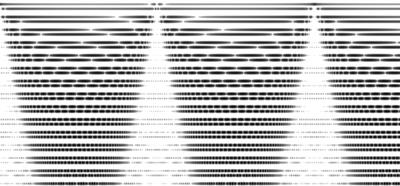
This work deals with the sonification of a quantum mechanical system and the processes that occur as a result of its quantum mechanical nature and interactions with other systems. The quantum harmonic oscillator is not only regarded as a system with sonifiable characteristics but also as a storage medium for quantum information. By representing sound information quantum mechanically and storing it in the system, every process that unfolds on this level is inherited and reflected by the sound. The main profit of this approach is that the sonification can be used as a first insight for two models: a quantum mechanical system model and a quantum computation model.
Stop challenging technology! Towards content-based audio production
Paper
David Pirrò, Gerhard Eckel, Martin Rumori
In Proceedings of the 4th International Conference on Spatial Audio, VDT IEM, Graz 2017, pp. 24-28
Abstract
Production tools that hide their technical complexity stimulate an understanding of creation that centres ‘content’ rather than materiality, or form. What are the consequences when such user-oriented tools become the predominant means for conceiving auditory experience? Many scholarly interpretations highlight as an advantage that ‘content’ creators do not have to deal with peculiarities of different sound projection methods anymore. However, assuming a universal model for auditory space effectively shadows its exploration. This paper illuminates that the focus on geometric representation may impede experiential sonic practice. The discussion departs from the main arguments of the call for this ICSA’s Student 3D Audio Competition. We aim to identify implicit demarcations that contradict the transdisciplinary nature of engineering in an artistic context.
Motion-Enabled Live Electronics
Eckel, Gerhard and Pirrò, David
Sound and Music Computing Conference, SMC 2009
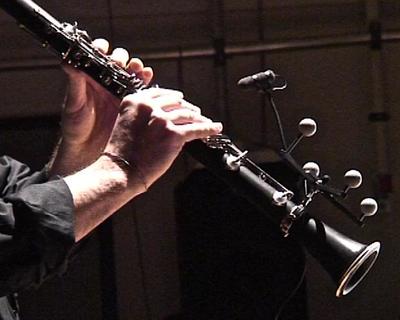
Motion-Enabled Live Electronics (MELE) is a special approach towards live electronic music aiming at increasing the degree of the performers’ embodiment in shaping the sound processing. This approach is characterized by the combination of a high-resolution and fully-3D motion tracking system with a tracking data processing system tailored towards articulating the relationship between bodily movement and sound processing. The artistic motivations driving the MELE approach are described, an overview of related work is given and the technical setup used in a workshop exploring the approach is introduced. Brief descriptions of the pieces realized in the workshop and performed in the final concert inform the presentation of the conclusions drawn from the workshop.
On Artistic Research in the Context of the Project Embodied Generative Music
Eckel, Gerhard and Pirrò, David
Proceedings of the 35th International Computer Music Conference, ICMC 2009
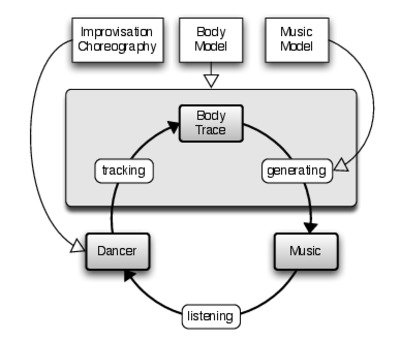
We describe an artistic research process leading to the intermedial piece Bodyscapes in the context of the artistic and scientific research project Embodied Generative Music, which aims at furthering the understanding of the relationship between bodily and musical expression.
Towards a multi-layer architecture for multi-modal rendering of expressive actions.
De Poli, G. and Avanzini, F. and Rodà, A. and Mion, L. and D'Incà, and Trestino, C. and Pirrò, D. and Luciani, A. and Castagne, N.
Proc. 2nd Int. Conf. on Enactive Interfaces (ENACTIVE05), 2009

Expressive content has multiple facets that can be conveyed by music, gesture, actions. Different application scenarios can require different metaphors for expressiveness control. In order to meet the requirements for flexible representation, we propose a multi-layer architecture structured into three main levels of abstraction. At the top (user level) there is a semantic description, which is adapted to specific user requirements and conceptualization. At the other end are low-level features that describe parameters strictly related to the rendering model. In between these two extremes, we propose an intermediate layer that provides a description shared by the various high-level representations on one side, and that can be instantiated to the various low-level rendering models on the other side. In order to provide a common representation of different expressive semantics and different modalities, we propose a physically-inspired description specifically suited for expressive actions.
Interviews
Rivista Musica+
Interview for the Magazine "Rivista Musica+", published by the Conservatory of Music "Alfredo Casella" in L'Aquila (IT)
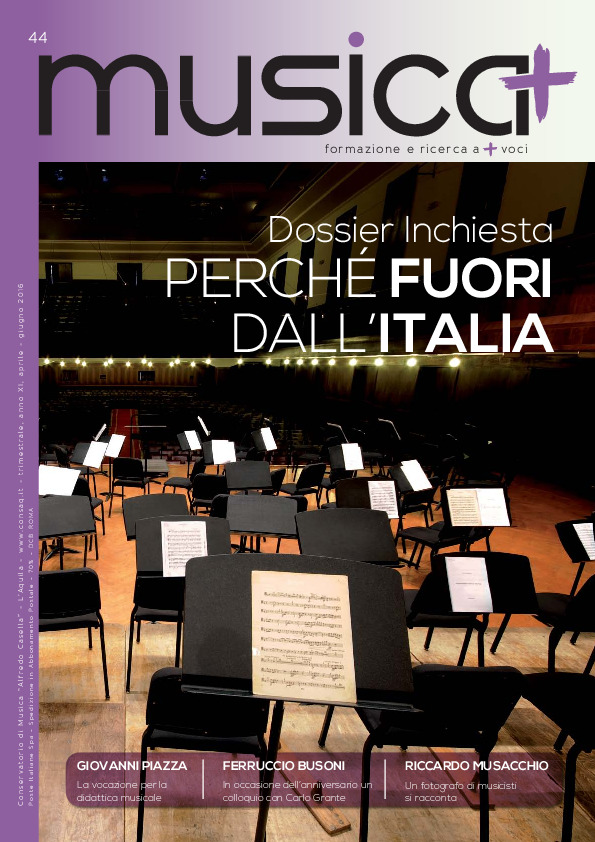
Asimmetrie
Il souno dei dati The sound of data
April 2018, pages 44 - 45
Magazine of the INFN, Istitute Nazionale di Fisica Nucleare (National Institute for Nuclear Physics)
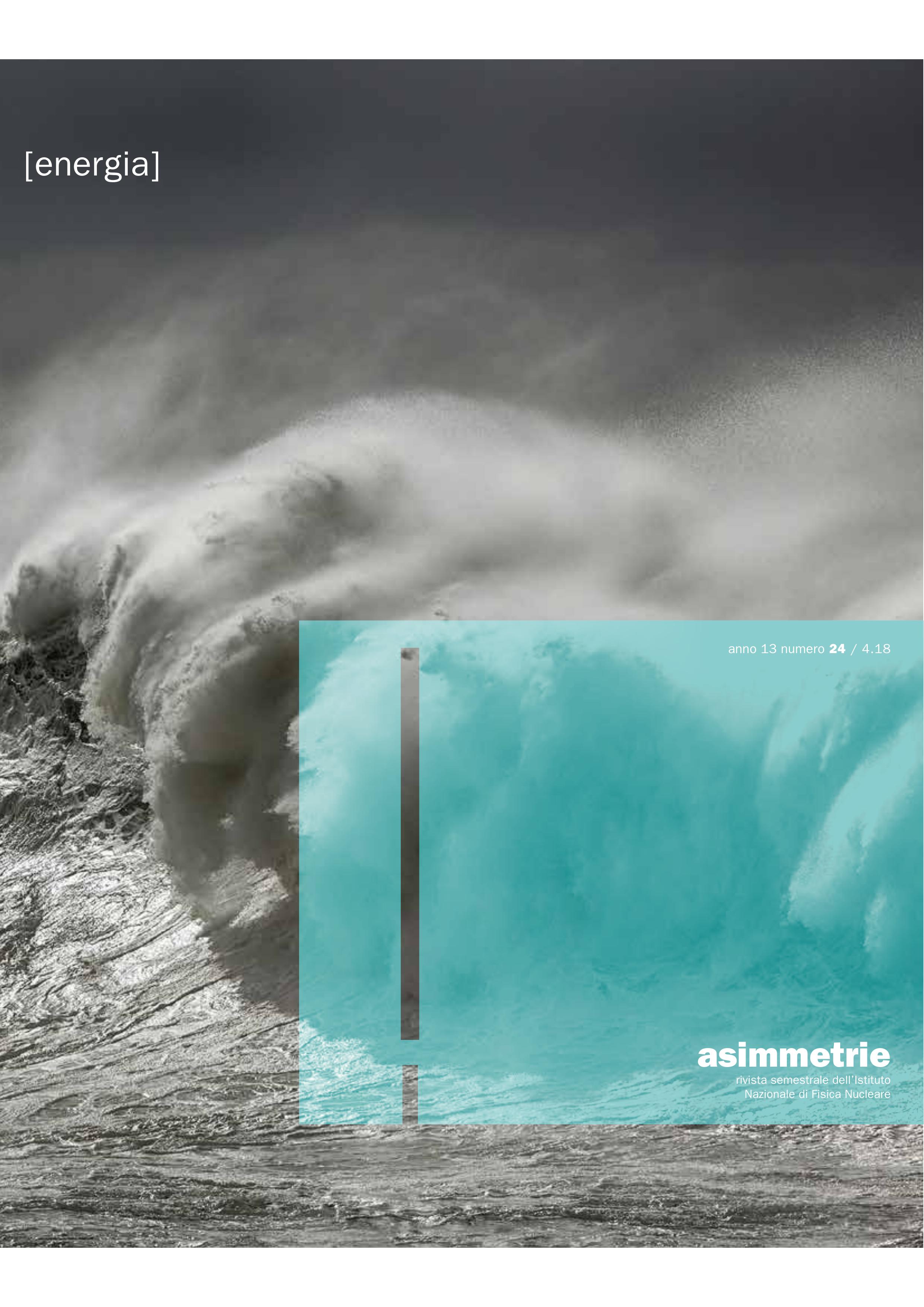
Staircase
by Gerhard Eckel, David Pirrò, Martin Rumori, Gerriet K. Sharma, Christos Zachos
Permanent generative sound installation at technical university graz Studienzentrum, Inffeldgasse 10, 8010 Graz, Austria


Inner Space
InnerSpace is part of a group of works created under the umbrella project Imperfect Reconstruction (https://www.researchcatalogue.net/view/245942/245943) The image encoding/decoding is often associated with the ideal of perfect reconstruction. Experiencing something, an idea can turn into a movement, a finite set of elements, which can then be transported and unpacked as a reference to the original experience or movement. Imperfection is thus taken as a failure, for example a failure to understand. What interested us in this project were the distances and gaps that produce imperfection, defined as resistance of thoughts and movements to become determinate. InnerSpace is conceived as an 8-channels video installation for small format monitors. A complementary set of quasi-fixed video miniatures are recalled by a slightly indeterminate algorithm. As the name suggests, it was originally situated in an intimate, half-closed space, but it also refers to the fact that each piece is, in one way or another, connected to our noö-topology, the spatial particularity of our mind, the way we internalise the algorithmic.
Showed at:
- xCoAx 2017 Lisbon
- From Science to Art and Back, Stockholm October 2017
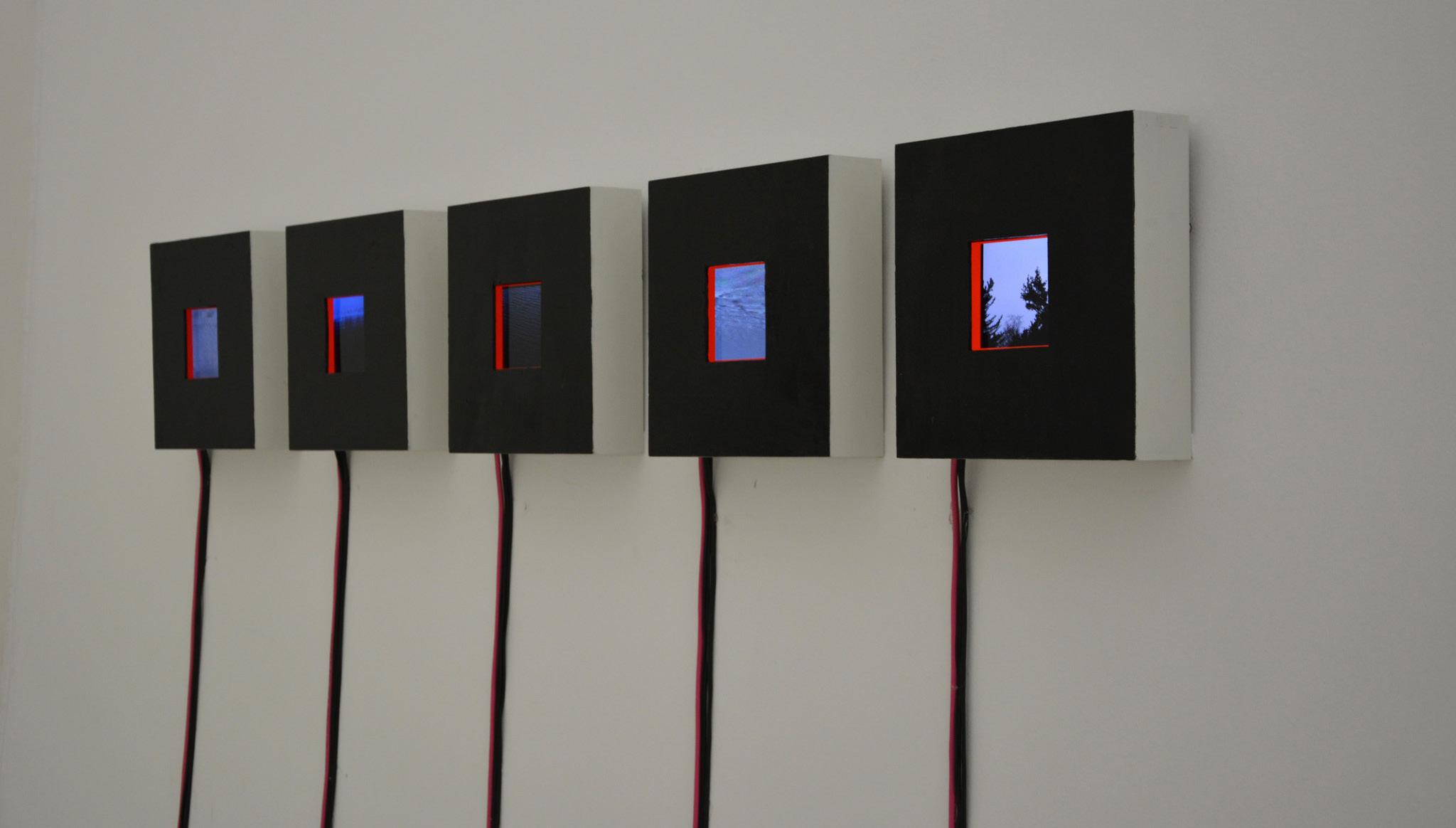
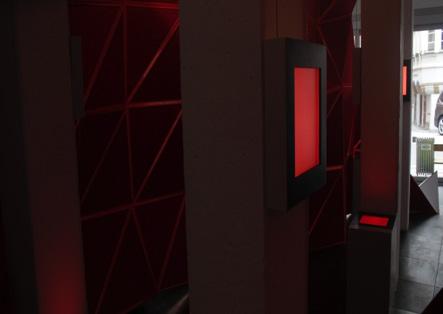
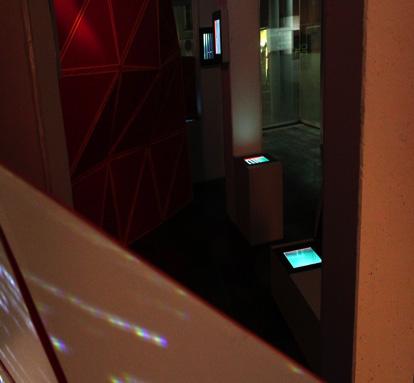
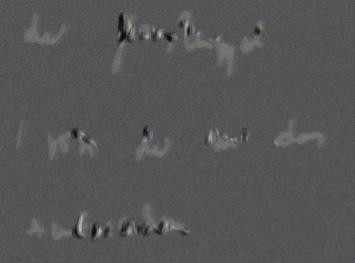
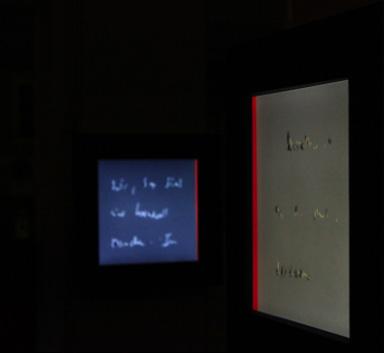
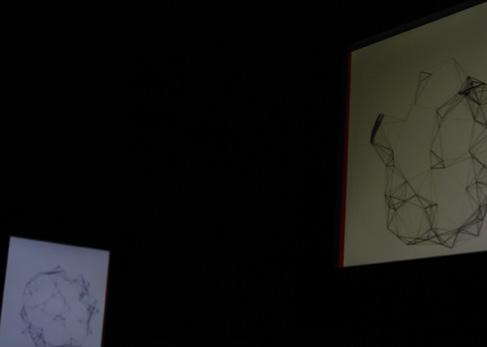
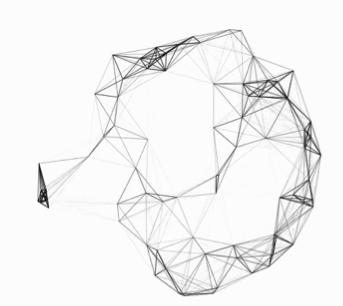
Stessa Dissonanza
Live-Electronic Performance
Antonia Manhartsberger, David Pirrò
Performance on Martin Rumori's multichannel installation "Promenade" in the context of the 2018 Art's birthday, 17.01.2018 at the esc medien kunst labor in Graz
altraconsonanza
improvisation collective
luc döbereiner georgios marentakis david pirrò martin rumori
altraconsonanza is an improvisation collective of electronic music of various kinds. the group has been founded in january 2012 in conjunction with the interior | exterior exhibition at esc im labor graz, austria. the name altraconsonanza is meant as a hommage to the italian pioneers who formed the nuova consonanza collective in the
Various performances starting from 2012 to 2017, e.g. at the 47. internationale ferienkurse für neue musik, darmstadt/germany
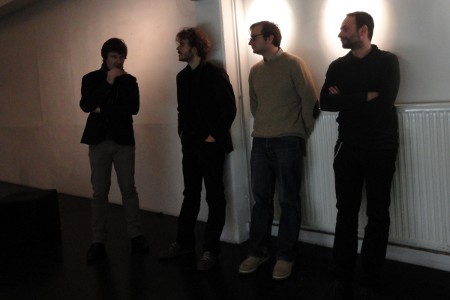
Publication List
- D. Pirrò. "Staging collisions: On behaviour." In Michael Schwab, editor, Transpositions Aesthetico-Epistemic Operators in Artistic Research. Leuven University Press, 2018.
- Rutz, H., Pirrò, D., "Körper." In xCoAx 2018 - Proceedings of the Sixth Conference on Computation Communication Aesthetics & X (6th Conference on Computation, Communication, Aesthetics & X, pp. 176-180, 2018
- Eckel, G., Schwab, M., Pirrò, "Da.ta (Transpositions)", D., MER. Paper Kunsthalle, Ghent, Belgium, 2017 ISBN:978-94-9232-172-5
- Rumori, M., Pirrò, D., Eckel, G., "Stop challenging technology! Towards content-based audio production." In Proceedings of the 4th International Conference on Spatial Audio, VDT IEM, Graz 2017, pp. 24-28
- Marian Weger, David Pirrò, and Robert Höldrich. "Evaluation of an acoustic interface for tremor analysis." In Proceedings of the 14th Sound and Music Computing Conference, pages 234–241, Espoo, Finland, 2017.
- Georgios Marentakis, David Pirrò, and Marian Weger. "Creative evaluation." In Proceedings of the 2017 Conference on Designing Interactive Systems, pages 853–864. ACM, 2017.
- D. Pirrò "Composing Interactions." PhD Thesis, Institute of Electronic Music and Acoustics University of Music and Performing Arts Graz, Austria, 2017
- Lisa Horvath, David Pirrò and Hanns Holger Rutz "Imperfect Reconstruction: an algorithmic project", 2017 ISBN:978-3-9503349-1-3
- Hanns Holger Rutz and David Pirrò. "Anemone actiniaria." In Proceedings of the 2016 xCoAx Conference, Computation, communication, Aesthetics and X, pages 404–408, 2016.
- Marian Weger, David Pirrò, Alexander Wankhammer, and Robert Höldrich. "Discrimination of tremor diseases by interactive sonification." In 5th Interactive Sonification Workshop (ISon), volume 12, 2016.
- Rutz, H. H., Pirrò, D., "Where Sounds Dwell" In Castillo, N., Howlett-Jones, K., (eds), Rose of the Winds, 2016 ISBN:978-3-9504253-1-4
- Georgios Marentakis, David Pirro, and Raphael Kapeller. "Zwischenräume-a case study in the evaluation of interactive sound installations." In Proceedings of the International Computer Music Conference ICMC, 2014.
- Katharina Vogt, David Pirrò, and Robert Höldrich. "Waveguides for model-based sonification." In Proceedings of the 9th Sound and Music Computing Conference, Copenhagen, Denmark, 2012.
- Gerhard Eckel, Martin Rumori, David Pirrò, and Ramón González-Arroyo. "A framework for the choreography of sound." In Proceedings of the 38th International Computer Music Conference, pages 404–511, Ljubljana, Slovenia, 2012.
- Georgios Marentakis and David Pirrò. "Exploring sound and spatialization design on speaker arrays using physical modelling." In Proceedings of the 9th Sound and Music Computing Conference, pages 55–60, Copenhagen, Denmark, 2012.
- David Pirrò, Alexander Wankhammer, Petra Schwingenschuh, Alois Sontacchi, and Robert Höldrich. "Acoustic interface for tremor analysis." In Proc. of the 18th International Conference on Auditory Display, pages 210–213, Atlanta, Georgia, 2012.
- Katharina Vogt, David Pirrò, Martin Rumori, and Robert Höldrich. "Sounds of simulations: data listening space." In Proceedings of the 38th International Computer Music Conference, pages 525–530, Ljubljana, Slovenia, 2012.
- David Pirrò and Gerhard Eckel. "Physical modelling enabling enaction: an example." In Proceedings of the International Conference on New Interfaces for Musical Expression, pages 461–464, Oslo, 2011.
- Katharina Vogt, David Pirrò, Ingo Kobenz, Robert Höldrich, and Gerhard Eckel. "Physiosonic-evaluated movement sonification as auditory feedback in physiotherapy." In In Sølvi Ystad, Mitsuko Aramaki, Richard Kronland-Martinet, and Kristoffer Jensen, editors, Auditory display, volume 5954 of Lecture Notes in Computer Science pages 103–120. Springer, 2010.
- Katharina Vogt, Robert Höldrich, David Pirrò, and Christof Gattringer. "Spin quartets, sonification of the xy model." In Proceedings of the 16th International Conference on Auditory Display, pages 97–102, Washington, DC, 2010.
- Niemüller, Tim, Alexander Ferrein, Gerhard Eckel, David Pirro, Patrick Podbregar, Tobias Kellner, Christof Rath, and Gerald Steinbauer. "Providing ground-truth data for the nao robot platform." In Robot Soccer World Cup, pp. 133-144. Springer, Berlin, Heidelberg, 2010.
- Katharina Vogt, Robert Höldrich, David Pirrò, Martin Rumori, Stefan Rossegger, Werner Riegler, and Matevz Tadel. "A sonic time projection chamber, sonified particle detection at cern." In Proceedings of the 16th International Conference on Auditory Display, pages 103–108, Washington, DC, 2010.
- Anna Saranti, Gerhard Eckel, and David Pirrò. "Quantum harmonic oscillator sonification." In Sølvi Ystad, Mitsuko Aramaki, Richard Kronland-Martinet, and Kristoffer Jensen, editors, Auditory Display, volume 5954 of Lecture Notes in Computer Science, pages 184–201. Springer Berlin Heidelberg, 2010.
- Eckel, G., Pirro, D., & Sharma, G. K. "Motion-enabled live electronics." In Proceedings of the 6th Sound and Music Computing Conference, Porto, Portugal, 2009
- Gerhard Eckel and David Pirrò. "On artistic research in the context of the project embodied generative music." In Proceedings of the 35th International Computer Music Conference, pages 541–544, Montréal, 2009.
- De Poli, Giovanni, Federico Avanzini, Antonio Rodà, Luca Mion, Gianluca d'Inca, Cosmo Trestino, Carlo de Pirro, Annie Luciani, and Nicolas Castagné. "Towards a multi-layer architecture for multi-modal rendering of expressive actions." In Proc. 2nd Int. Conf. on Enactive Interfaces (ENACTIVE05), pages 541–544, Genova, Italy, 2005. 2005.
Publication List
- D. Pirrò. "Staging collisions: On behaviour." In Michael Schwab, editor, Transpositions Aesthetico-Epistemic Operators in Artistic Research. Leuven University Press, 2018.
- Rutz, H., Pirrò, D., "Körper." In xCoAx 2018 - Proceedings of the Sixth Conference on Computation Communication Aesthetics & X (6th Conference on Computation, Communication, Aesthetics & X, pp. 176-180, 2018
- Eckel, G., Schwab, M., Pirrò, "Da.ta (Transpositions)", D., MER. Paper Kunsthalle, Ghent, Belgium, 2017 ISBN:978-94-9232-172-5
- Rumori, M., Pirrò, D., Eckel, G., "Stop challenging technology! Towards content-based audio production." In Proceedings of the 4th International Conference on Spatial Audio, VDT IEM, Graz 2017, pp. 24-28
- Marian Weger, David Pirrò, and Robert Höldrich. "Evaluation of an acoustic interface for tremor analysis." In Proceedings of the 14th Sound and Music Computing Conference, pages 234–241, Espoo, Finland, 2017.
- Georgios Marentakis, David Pirrò, and Marian Weger. "Creative evaluation." In Proceedings of the 2017 Conference on Designing Interactive Systems, pages 853–864. ACM, 2017.
- D. Pirrò "Composing Interactions." PhD Thesis, Institute of Electronic Music and Acoustics University of Music and Performing Arts Graz, Austria, 2017
- Lisa Horvath, David Pirrò and Hanns Holger Rutz "Imperfect Reconstruction: an algorithmic project", 2017 ISBN:978-3-9503349-1-3
- Hanns Holger Rutz and David Pirrò. "Anemone actiniaria." In Proceedings of the 2016 xCoAx Conference, Computation, communication, Aesthetics and X, pages 404–408, 2016.
- Marian Weger, David Pirrò, Alexander Wankhammer, and Robert Höldrich. "Discrimination of tremor diseases by interactive sonification." In 5th Interactive Sonification Workshop (ISon), volume 12, 2016.
- Rutz, H. H., Pirrò, D., "Where Sounds Dwell" In Castillo, N., Howlett-Jones, K., (eds), Rose of the Winds, 2016 ISBN:978-3-9504253-1-4
- Georgios Marentakis, David Pirro, and Raphael Kapeller. "Zwischenräume-a case study in the evaluation of interactive sound installations." In Proceedings of the International Computer Music Conference ICMC, 2014.
- Katharina Vogt, David Pirrò, and Robert Höldrich. "Waveguides for model-based sonification." In Proceedings of the 9th Sound and Music Computing Conference, Copenhagen, Denmark, 2012.
- Gerhard Eckel, Martin Rumori, David Pirrò, and Ramón González-Arroyo. "A framework for the choreography of sound." In Proceedings of the 38th International Computer Music Conference, pages 404–511, Ljubljana, Slovenia, 2012.
- Georgios Marentakis and David Pirrò. "Exploring sound and spatialization design on speaker arrays using physical modelling." In Proceedings of the 9th Sound and Music Computing Conference, pages 55–60, Copenhagen, Denmark, 2012.
- David Pirrò, Alexander Wankhammer, Petra Schwingenschuh, Alois Sontacchi, and Robert Höldrich. "Acoustic interface for tremor analysis." In Proc. of the 18th International Conference on Auditory Display, pages 210–213, Atlanta, Georgia, 2012.
- Katharina Vogt, David Pirrò, Martin Rumori, and Robert Höldrich. "Sounds of simulations: data listening space." In Proceedings of the 38th International Computer Music Conference, pages 525–530, Ljubljana, Slovenia, 2012.
- David Pirrò and Gerhard Eckel. "Physical modelling enabling enaction: an example." In Proceedings of the International Conference on New Interfaces for Musical Expression, pages 461–464, Oslo, 2011.
- Katharina Vogt, David Pirrò, Ingo Kobenz, Robert Höldrich, and Gerhard Eckel. "Physiosonic-evaluated movement sonification as auditory feedback in physiotherapy." In In Sølvi Ystad, Mitsuko Aramaki, Richard Kronland-Martinet, and Kristoffer Jensen, editors, Auditory display, volume 5954 of Lecture Notes in Computer Science pages 103–120. Springer, 2010.
- Katharina Vogt, Robert Höldrich, David Pirrò, and Christof Gattringer. "Spin quartets, sonification of the xy model." In Proceedings of the 16th International Conference on Auditory Display, pages 97–102, Washington, DC, 2010.
- Niemüller, Tim, Alexander Ferrein, Gerhard Eckel, David Pirro, Patrick Podbregar, Tobias Kellner, Christof Rath, and Gerald Steinbauer. "Providing ground-truth data for the nao robot platform." In Robot Soccer World Cup, pp. 133-144. Springer, Berlin, Heidelberg, 2010.
- Katharina Vogt, Robert Höldrich, David Pirrò, Martin Rumori, Stefan Rossegger, Werner Riegler, and Matevz Tadel. "A sonic time projection chamber, sonified particle detection at cern." In Proceedings of the 16th International Conference on Auditory Display, pages 103–108, Washington, DC, 2010.
- Anna Saranti, Gerhard Eckel, and David Pirrò. "Quantum harmonic oscillator sonification." In Sølvi Ystad, Mitsuko Aramaki, Richard Kronland-Martinet, and Kristoffer Jensen, editors, Auditory Display, volume 5954 of Lecture Notes in Computer Science, pages 184–201. Springer Berlin Heidelberg, 2010.
- Eckel, G., Pirro, D., & Sharma, G. K. "Motion-enabled live electronics." In Proceedings of the 6th Sound and Music Computing Conference, Porto, Portugal, 2009
- Gerhard Eckel and David Pirrò. "On artistic research in the context of the project embodied generative music." In Proceedings of the 35th International Computer Music Conference, pages 541–544, Montréal, 2009.
- De Poli, Giovanni, Federico Avanzini, Antonio Rodà, Luca Mion, Gianluca d'Inca, Cosmo Trestino, Carlo de Pirro, Annie Luciani, and Nicolas Castagné. "Towards a multi-layer architecture for multi-modal rendering of expressive actions." In Proc. 2nd Int. Conf. on Enactive Interfaces (ENACTIVE05), pages 541–544, Genova, Italy, 2005. 2005.
Klangnetze
Artistic Project
David Pirrò

The project "Klangnetze" is a collaboratively developed, site-specific sound installation that sonically connects different places in Styria. It takes the concept of the network as a starting point. Mobile sound elements are installed in public spaces at five locations, interacting with each other and with their acoustic environment. These elements consist of photovoltaically powered computers that are programmed by the artists. In addition to the five locations in Styria, a virtual location will be added. Here, the five works installed in the public space are interconnected in another work that can be heard online.
The project started at the beginning of 2022. and will go on until end of 2022. The official web page will be online soon.

The project is jointly funded by the State of Styria and Federal Ministry for Arts, Culture, the Civil Service and Sport (Bundesministerium für Kunst, Kultur, öffentlichen Dienst und Sport) Klangnetze is a cooperation with:
- Leibnitz Kult
- eisenerZ*ART
- Gleisdorf
- Spielberg
- Ligist - Schilcherhof
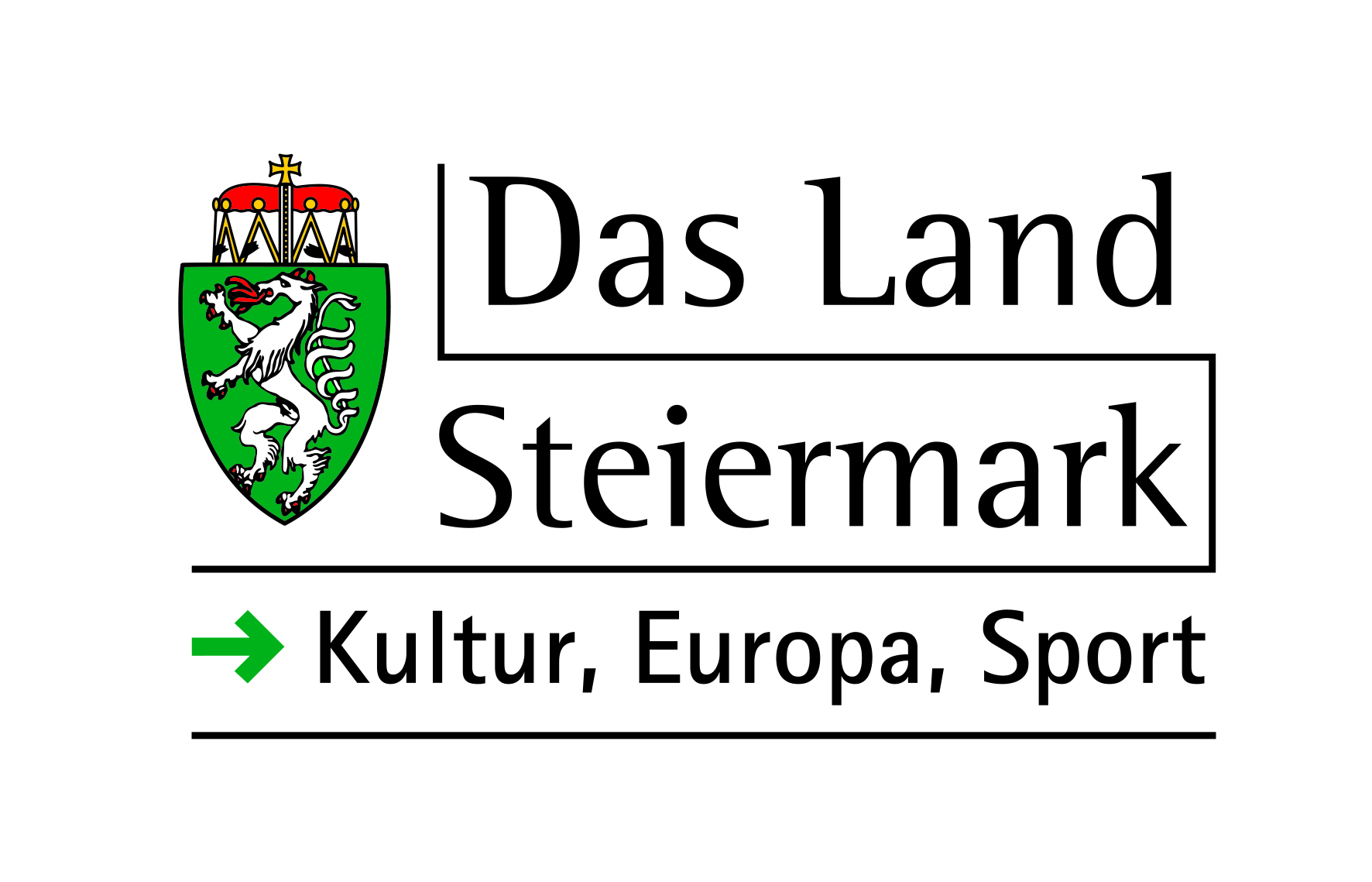







The Metaboliser
Audio-visual Work
David Pirrò
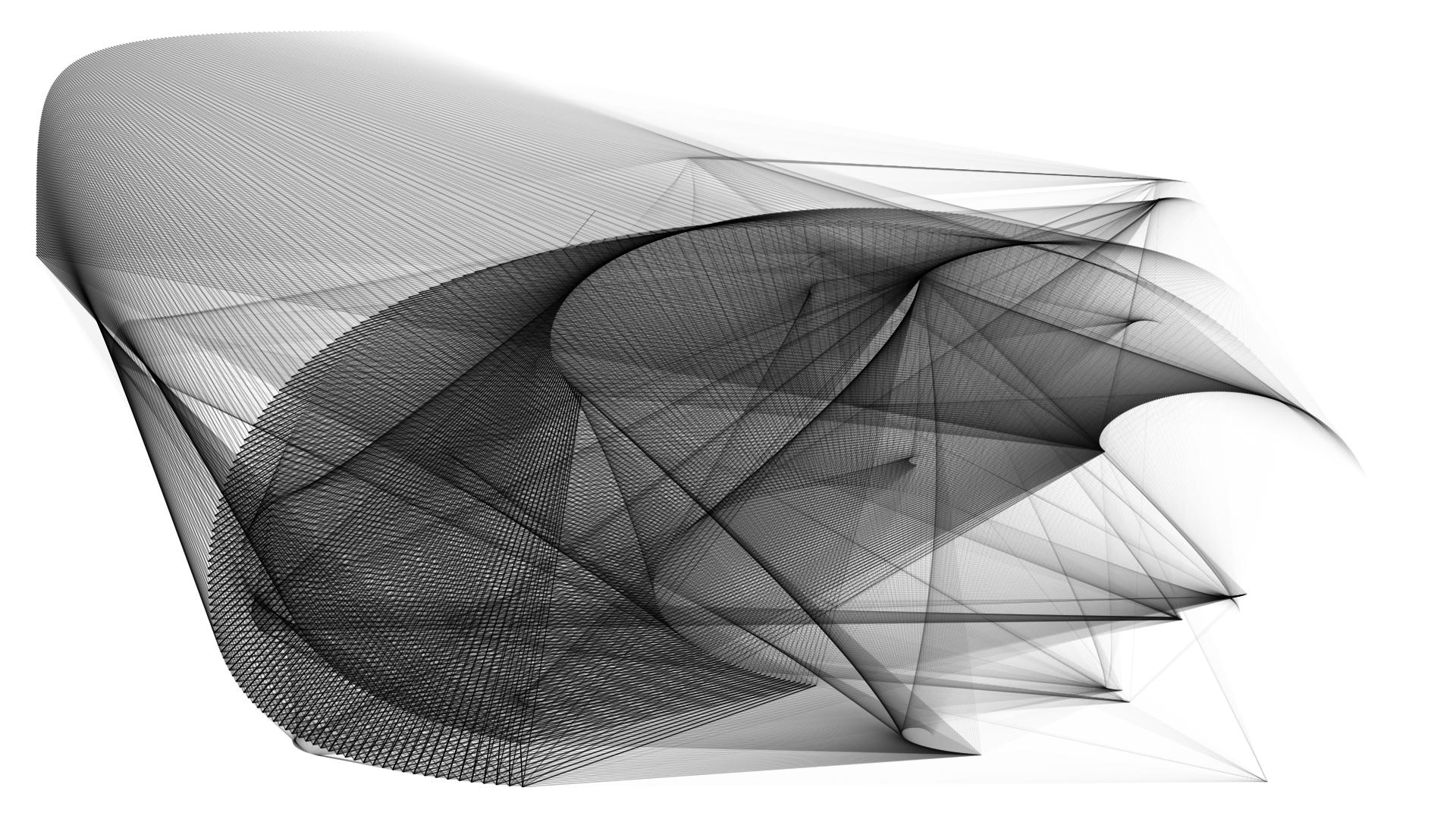
The Metaboliser on the Researchcatalogue
The Metaboliser is an artistic audio-visual work whose development was triggered by a reaction towards a certain way of conceiving of and operating computers common in many branches of digital arts. A conception which relegates these machines to the role of mere accomplishment of a predefined task, mostly that of generating a perceptible audio or visual form for some kind of data or of the ideas of the artists. That is, computers are considered as a means for finding a solution to a problem of representation of something external.
…
The Metaboliser is an artistic work that embodies the ideas of networks and entanglement in different ways. It is a computational artefact that does not have a given solution to achieve: once it is started, it is a potentially endless process. Its temporal evolution is its primary sensible dimension: that is, rather than resulting in some static object which could be experienced as a singular object, the metaboliser continuously produces changing visual and auditory forms that cannot be extracted from their temporal sequence: a “snapshot” of its evolution cannot be extracted from the interconnection of its past and its future. The experience of the unfolding and development of its behaviour, the particular way in which subsequent states relate to each other, this is the mode of perception the work addresses.
…
This work originated within the artistic research project Transpositions.
Space is Algorithm
Experimental Text
David Pirrò
Contribution to Spatial Experiments in MAST edited by Castillo-Rutz, Nayarí and Hederer, Franziska, appeared 2021

TODO Online installations
TODO Contingency & Synchronization
ARIGA - Artistic Research in Generative Arts
David Pirrò & Luc Döbereiner

The Special Interest Group on Artistic Research in Generative Art, founded 2021, (ARIGA) addresses artistic research that focuses on the computational, the algorithmic, and the generative. ARIGA offers a context for artistic practices that create processes whose performance results in the work of art: such performances may or may not be influenced by external factors or agents (the audience, human performers, data, light, the weather etc.). We refer to practices that set the conditions for a work of art to emerge based on the temporal and unforeseeable interaction of an ensemble of agents, objects or rules. ARIGA gathers artist researchers working in diverse media, including space, sound, image, video, sculpture, and language.
The group addresses practices that engage in an interaction with computational artifacts that suspend preconceived functioning — tools or instruments to achieve something — and rather embrace the mutual evolution of technology and artistic thought. It further advocates for a stance towards the computational as a non-atomic and actor integrated in a mesh of irreducible interrelations, as part of an ecology in which technological, historical, social, scientific aspects interact. ARIGA critically addresses fundamental questions common to diverse practices and approaches relating to notation, the textuality of source code, the role of procedures, computation and automation in creative processes, the materiality of algorithms, machine agency, and data as material. Moreover, we seek to provide a context for the critical and speculative artistic exploration of web technologies and their potential to connect and relate people, places, spaces, time scales, data and algorithms.
ARIGA seeks to establish a framework and network for existing communities of artistic researchers working with computational material. ARIGA aims to create a context for exchange, collaboration, publication, and discourse for artists and researchers in experimental generative art. We deem such a platform particularly relevant due to the increasing digitization of our lives, post-covid remote presence mediated by networks of computational agents, and the ubiquity of AI and machine learning in everyday life and the arts. ARIGA provides a space for critical and artistic reflection on these realities.
ARIGA has been proposed and conceived by David Pirrò and Luc Döbereiner. We aim to form a larger group of core organizing members representing a more diverse group of artistic disciplines and practices.
We propose to establish a regularly appearing peer-reviewed online publication medium (e.g. "Journal for Generative Art", working title) hosted on the Research Catalogue, either autonomously or as part of an already established journal. In doing so, we aim to actively feed into the further development of the Research Catalogue by gathering creative coding practices and expertise. In this way, ARIGA aims to foster the development of genuinely generative and computational presentation and publication formats. In addition, we propose to contribute to SAR conferences with panels, presentations, and workshops centered around artistic research in generative art.
The ARIGA Special Interest Group is supported by the University of Music and Performing Arts Graz.
ARIGA introduction on the Researchcatalogue
Link to the ARIGA Portal on the researchcatalogue
Link to the ARIGA channel on youtube hosting the recording of the ARIGA sessions. In each session group's members present their work in Generative Arts
TODO ARIGA SAR presentation
TODO Metabolizer perfs
TODO Algorithmic segments + catalogue
TODO Presentation in Barcelona
TODO segmod
CD
TODO TP jacobs university
TODO Interview asimmetrie
TODO Nutida Musik TP
TODO TP events (ail + eventual)
TODO ICSA 2017 paper
TODO Ringvorlesung
TODO KünstlerInnen Gespräch und Lesung: Schwärmen Vernetzten
TODO publication of transpositions book chapter
TODO Imperfect catalogue
TODO the latest every move a sound with video
TODO DATA book
TODO Useless machines
Description of the work